French Polynesia, an overseas French territory in the Pacific, is made up of 118 islands across five archipelagos, populated by 250,000 residents, along with countless small atolls. Spanning an ocean area nearly as large as Europe, it is renowned as one of the most breathtaking places in the world.
Polynesia is a place that makes a striking first impression. From diving into the clear waters around the reefs of Taha’a to the surreal blues of Bora Bora's lagoon and trekking through the lush, green mountains of Moorea, the islands offer unforgettable beauty and diverse landscapes.
Tiny motus surrounding Bora Bora and Taha’a look like jewels scattered across emerald waters, wrapped in palm trees and covered in golden sand that sparkles in the sun like glitter. These small slices of paradise encircle fairy-tale coral reefs, with villages hiding old temples. There are also magical mountains, fresh juicy pineapples, and fish in coconut milk. Add to that luxurious overwater hotels, swimming with sharks, and whale watching in the middle of the ocean, and you have the recipe for a dream trip.
Polynesia covers an immense area, but in this post, I'll highlight some of its most stunning parts. Below, you'll find the most beautiful places I visited over several weeks. I hope this post takes you on a virtual journey through this extraordinary corner of the Earth.
In this post, you'll learn about the must-see spots in Polynesia, the best activities to enjoy nature and immerse yourself in Polynesian culture, as well as what to try locally. I’ll also share recommendations for the most beautiful hotels, guesthouses, and restaurants to sample traditional Polynesian cuisine.
Welcome to French Polynesia!
Click here for more French Polynesia blog posts.
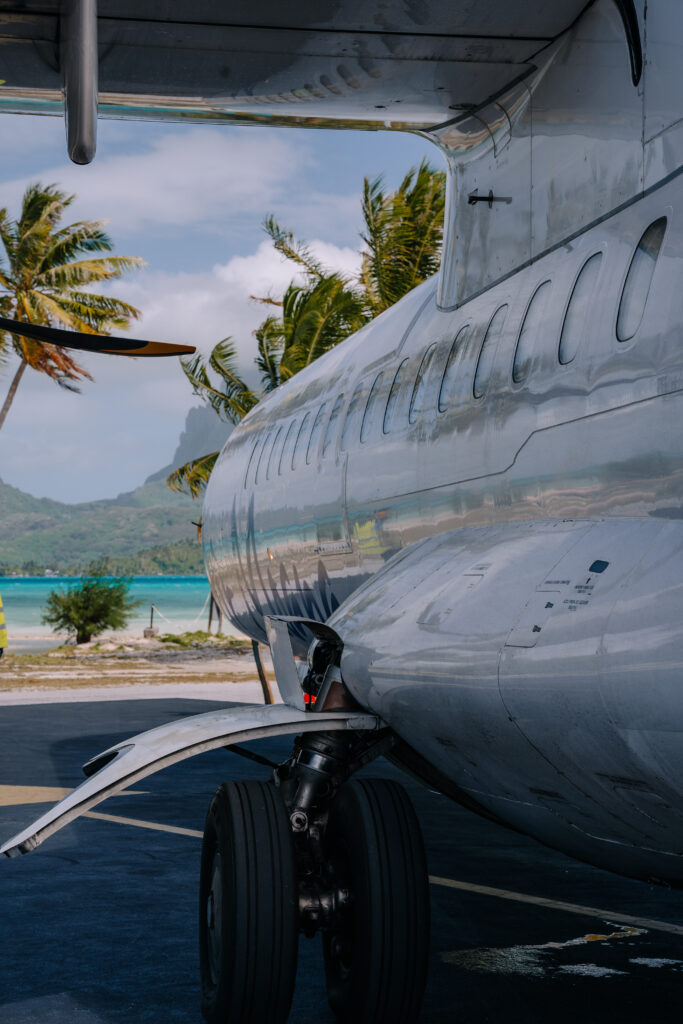
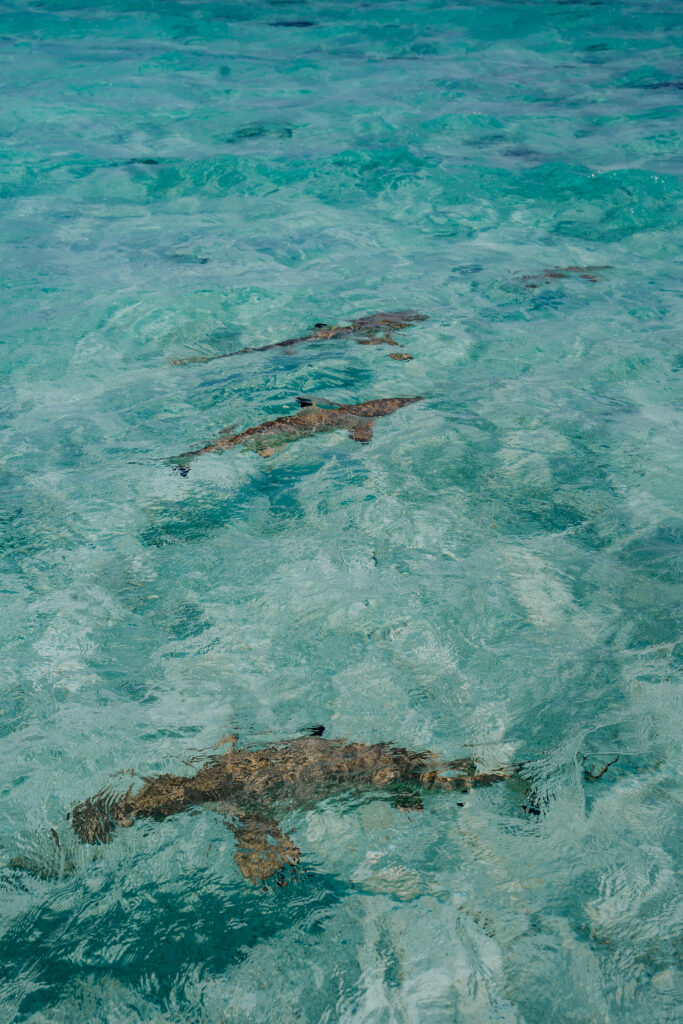
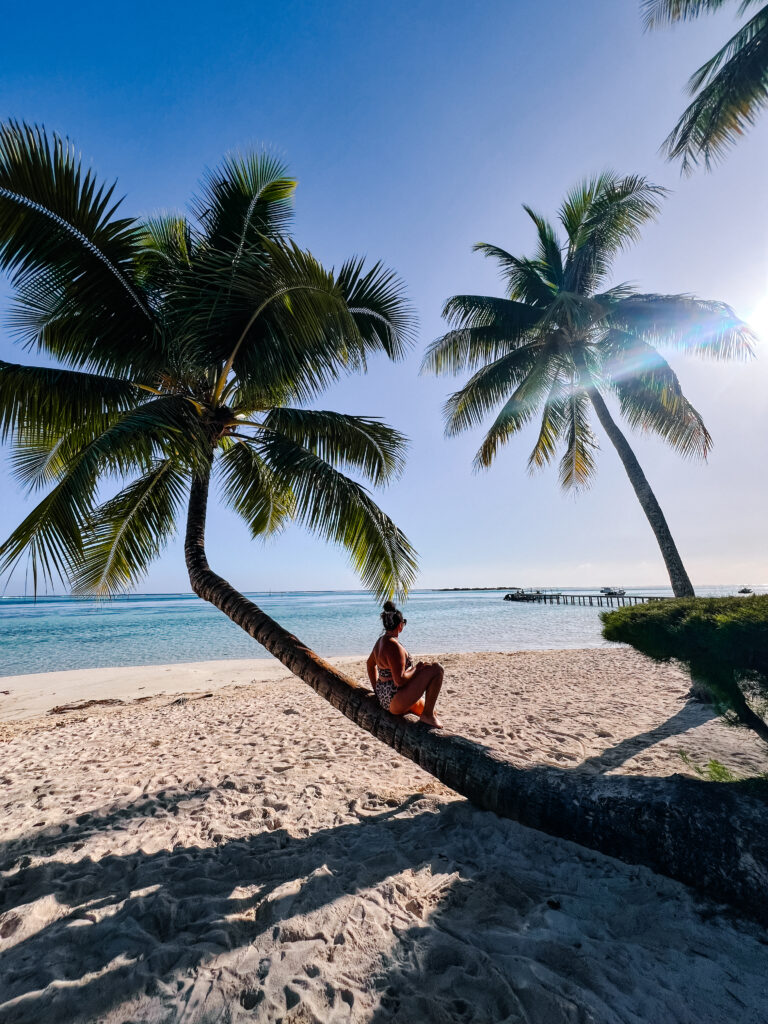
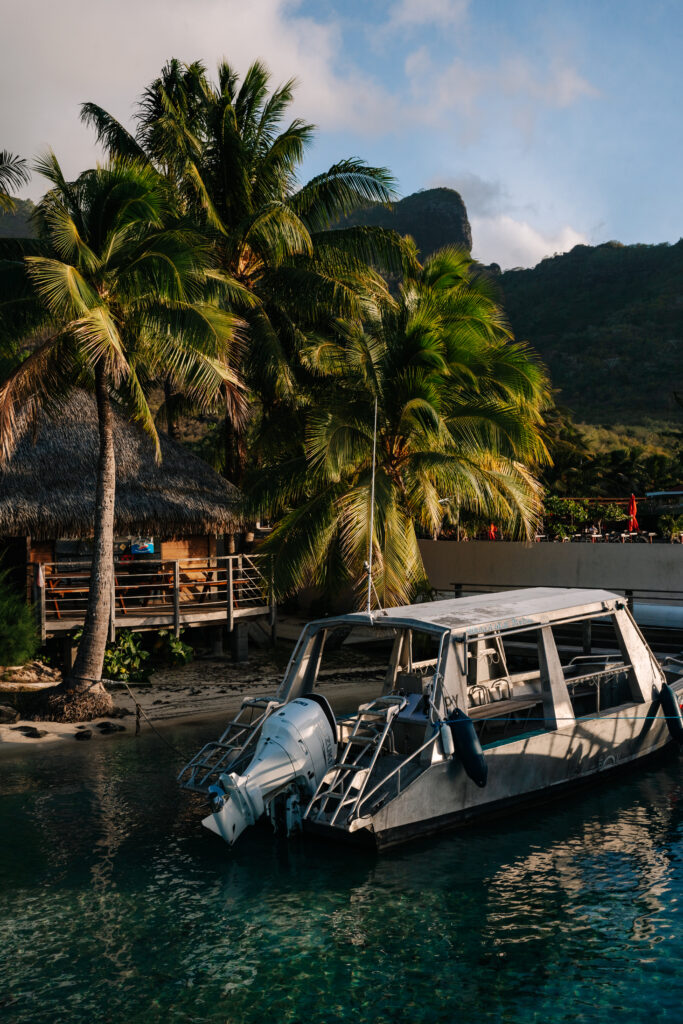
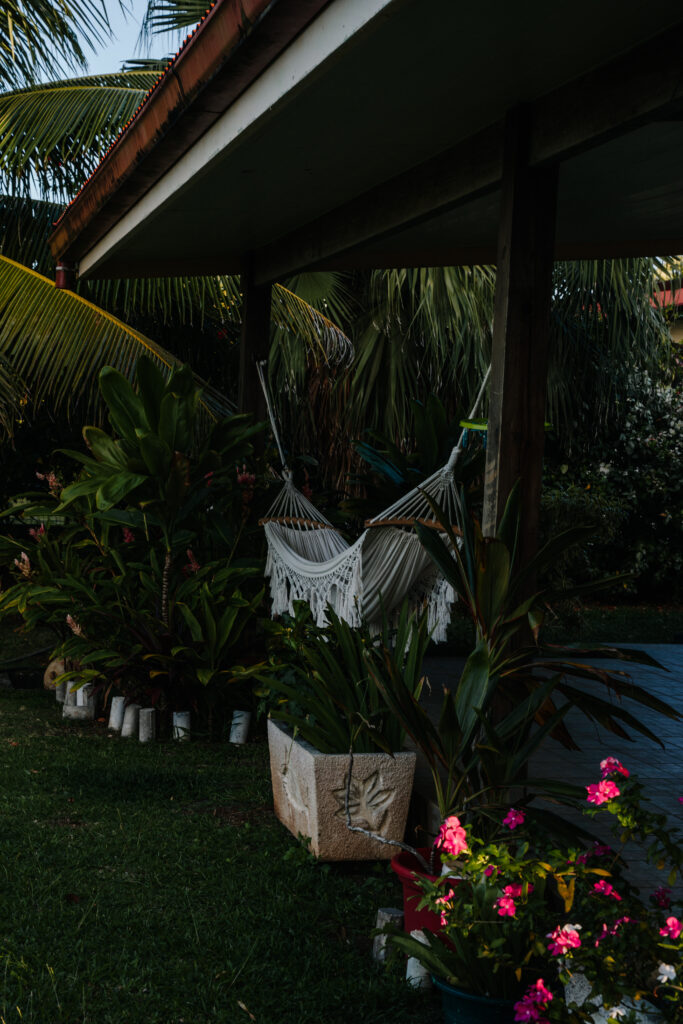
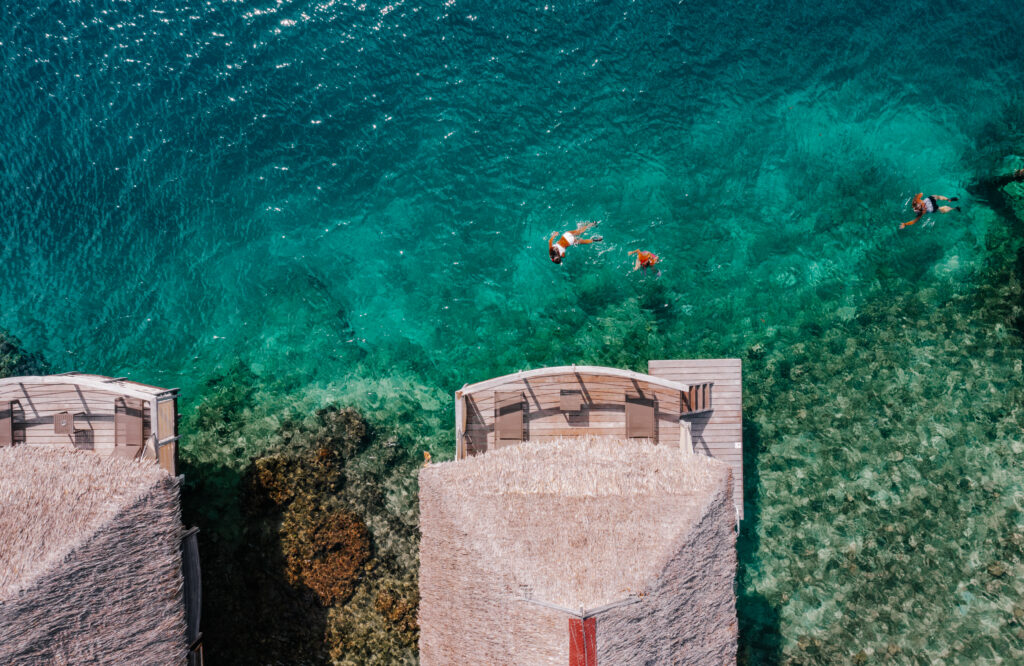
Polynesia spans a vast area, scattered across the map like crumbs between Australia, New Zealand, Hawaii, and America. It is a world known from travel brochures and catalogs. Due to its large size, this guide provides a brief overview, designed to help with further research and planning for your journey.
The Society Archipelago (L'archipel de la Société) consists of the Windward Islands (Tahiti, Moorea, Tetiaroa) and the Leeward Islands (Bora Bora, Huahine, Raiatea, Tahaa, Maupiti). Tahiti and Moorea are volcanic, mountainous islands, while Tetiaroa is a coral atoll. Tahiti is the largest and most populous island, home to Papeete, the main international airport. The Society Islands feature dramatic mountains and stunning blue lagoons.
Tuamotu Archipelago – an archipelago of 76 low, scattered atolls stretching over 1,762 km. A flight from Tahiti takes about an hour and a half. The most popular islands are: Rangiroa (famous for its coral reefs, with churches made of coral and coral wine – vineyards grow grapes in coral soil) and Fakarava: an excellent place for diving and exploring coral reefs and underwater life. On these islands, like on the Society Islands, pearls and fishing are cultivated.
Gambier Archipelago – fourteen high islands (some very small), several coral reefs, and motus (small coral islands). The main islands are: Mangareva (the only permanently inhabited), Taravai, Akamaru, Aukena, Agakauitai (uninhabited, home to caves with the graves of ancient kings), and Kamaka. These are the easternmost islands. The islands and motus are surrounded by a vast, blue lagoon, inside which the higher islands are located.
Austral Islands (Îles Australes) – a group of several small oceanic islands, surrounded by coral atolls. It is the southernmost part of Polynesia. It consists of 5 main volcanic islands and 2 smaller groups of 4 islands each. The main island is Tubuai. The entire archipelago is home to just under 7,000 people.
(Archipelag Markizy) (Îles Marquises) – a chain of 12 islands, of which only 6 are inhabited. The most popular ones are Nuku Hiva, Hiva Oa, and Fatu Hiva. While there is no blue lagoon, the extraordinary vegetation, mountains, and beaches hidden in wild, green bays attract many tourists. You’ll also find ancient temples and waterfalls here. The Marquesas are not only known for their stunning nature and archaeological sites, but also as the birthplace of Polynesian culture, with living traditions of tattooing, sculpture, and dance. Paul Gauguin and Jacques Brel, who both lived in Polynesia, are buried here.
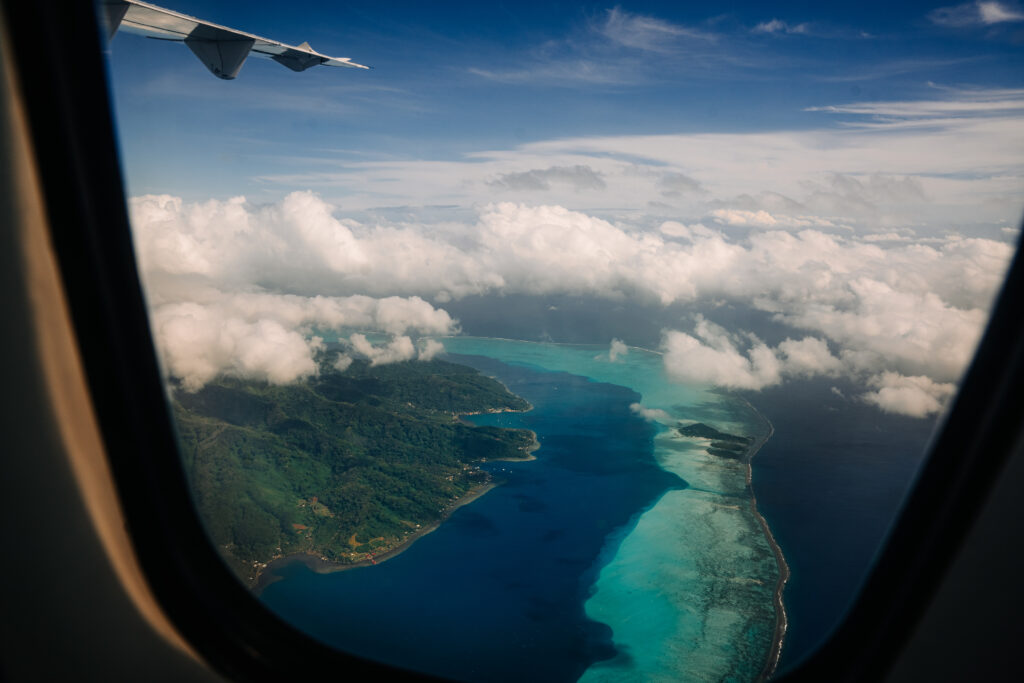
The best time to visit Polynesia is during the dry season, from April to October. For ideal weather, visit between June and October. Temperatures are milder and perfect for outdoor activities like snorkeling and trekking, with lower humidity. The peak season runs from July to September, meaning crowded hotels and higher prices. The wet season, from November to March, brings heavy rainfall and high humidity, but still warm temperatures. Nature thrives during this time, and lush greenery is at its peak. Snorkeling is best planned at the end of the dry season when the water is clear and transparent. Additionally, note that the dry season often experiences strong winds, which can make boat tours less pleasant.
If you want to see whales, from July to November, females travel from Antarctica to the warm waters of Polynesia to mate and later give birth. During this period, you can observe these majestic, intelligent mammals, which are considered sacred by many Polynesians.
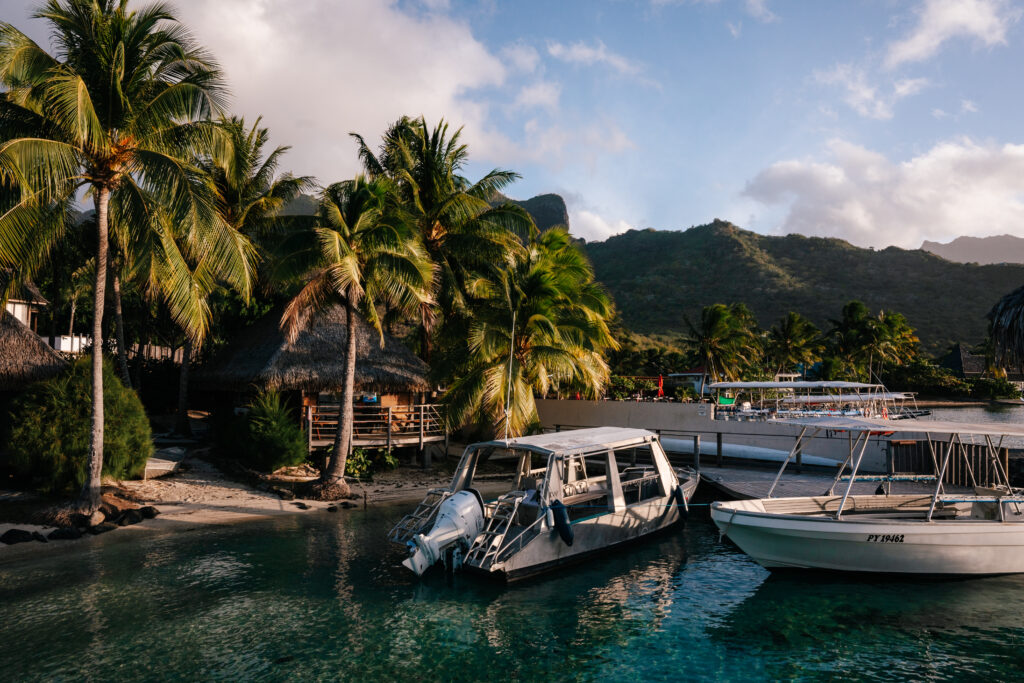
This was definitely the longest journey of my life. I’ll show you an example using my return trip (since I made a longer stop in Paris and spent a few days in Los Angeles when heading there). If you reverse the route, it will equally illustrate the journey from Poland to Polynesia. Note: There are no direct flights from Poland to Tahiti. The nearest flights with one layover are from Paris.
My route:
Papaeete -> Los Angeles (Air France) (8 h)
Los Angeles -> Paris (Air France) (12 h)
Paris -> Warsaw (Air France)
Warsaw -> Kraków (LOT)
Flights from Paris with a layover in Los Angeles or San Francisco are the most convenient for traveling to French Polynesia from Europe. All international flights land in Papeete, the capital of French Polynesia, located on the island of Tahiti.
You can choose from several airlines for flights to French Polynesia, including Air France, United, French Bee, and Air Tahiti Nui.
You can purchase a single ticket from Paris to Papeete, but it will always be a combined ticket with a layover, often marked as a "technical stop" during booking. If your layover is in the USA, remember to have a valid ESTA visa (obtaining one takes about 30 minutes).
Round-trip flights from Paris to Papeete typically start at around €1200 (5000 PLN).

Tahiti is the largest and most populated island in French Polynesia. It's the main entry point for travelers, with all international flights arriving in Papeete, the country's capital. This bustling city serves as a gateway to the other islands in the region.
Upon arriving in Papeete, you're greeted by the familiar scent of the ocean—fresh, slightly salty, and clean. Despite its small size (with just 27,000 residents), Papeete experiences heavy traffic. Murals decorate building walls, and the route from the airport to the city center runs alongside a picturesque marina. On one side, small bars known as roulottes serve affordable local food, while the other side mixes worn-out buildings with modern, slightly dusty shopping malls that have seen better days.
Tahiti is a large island, and while I only spent 2 days here between my arrival from the U.S. and departure for Europe, I'll share some recommendations I received and discovered during my visit. These include local attractions and activities that others have suggested and that I found enjoyable. Feel free to explore these when planning your own trip!
In Papeete, Tahiti’s capital, there’s always something happening. With numerous restaurants, bars, museums, cultural centers, and parks, the city is the administrative, shopping, and economic hub of Polynesia. Key attractions include the Paofai Park, the beautiful Bougainville Park, Notre Dame Cathedral, and the cultural house (La Maison de la Culture). Evening gatherings at Place Vaiete feature roulottes (food trucks), offering a vibrant local experience. It's a lively city with festivals, events, and historical significance, making it a must-visit destination.
However, for me, the greatest attraction was the local market in the city center. Le Marche du Papeete has been operating since 1989. This covered market is Polynesia in a nutshell. A cultural and culinary paradise for every tourist. You will find not only fresh tuna and swordfish, mangoes, pineapples, and bananas, but also tiare flowers, hand-woven baskets, pareos, jewelry, bags, and wooden crafts. The crafts and handmade goods are beautiful, and the whole market smells intensely. I’ve never seen such beautiful fresh tuna anywhere else.
Near the market, you'll find many Polynesian restaurants serving fish and seafood, along with colorful local stores offering handmade crafts. These spots reflect the vibrant culture and unique flavors of the region, providing a wonderful experience for anyone visiting Papeete.
I visited Papeete three times, but I know there's much more to explore on Tahiti. If I had more time, I'd visit additional spots around the island, including hiking trails, waterfalls, and beaches. Here are a few ideas for things I would have done with more time, based on my research:
If you have time on Tahiti, consider visiting the Faarumai waterfalls, which consist of three cascades: Vaimahuta, Haamaremare Rahi, and Haamaremare Iti. A trek to Papenoo will reveal additional waterfalls like Topatari, Vaiharuru, and Puraha (with eels!). For a more challenging hike, the impressive Fautaua waterfall is a must-see.
You can visit a black pearl farm to learn about the fascinating process of how these rare gems are created. Discover the techniques involved in cultivating the pearls and the significance of this industry to the local culture and economy.
Take a trekking adventure in the mountainous areas with lush forests offering stunning views. Trails in places like the Papenoo Valley or the lava caves of Hitiaa are exceptional. Don't miss the beautiful Vaipahi Water Gardens, a serene spot for nature lovers.
If your schedule allows, it's definitely worth dedicating more time to explore Tahiti. The island offers a wide variety of stunning landscapes, trekking opportunities, and cultural experiences. Whether you're interested in waterfalls, pearl farms, or hiking through lush forests, there's a lot to see and do. Even though I only spent a short time there, I found it rich in beauty and adventure.
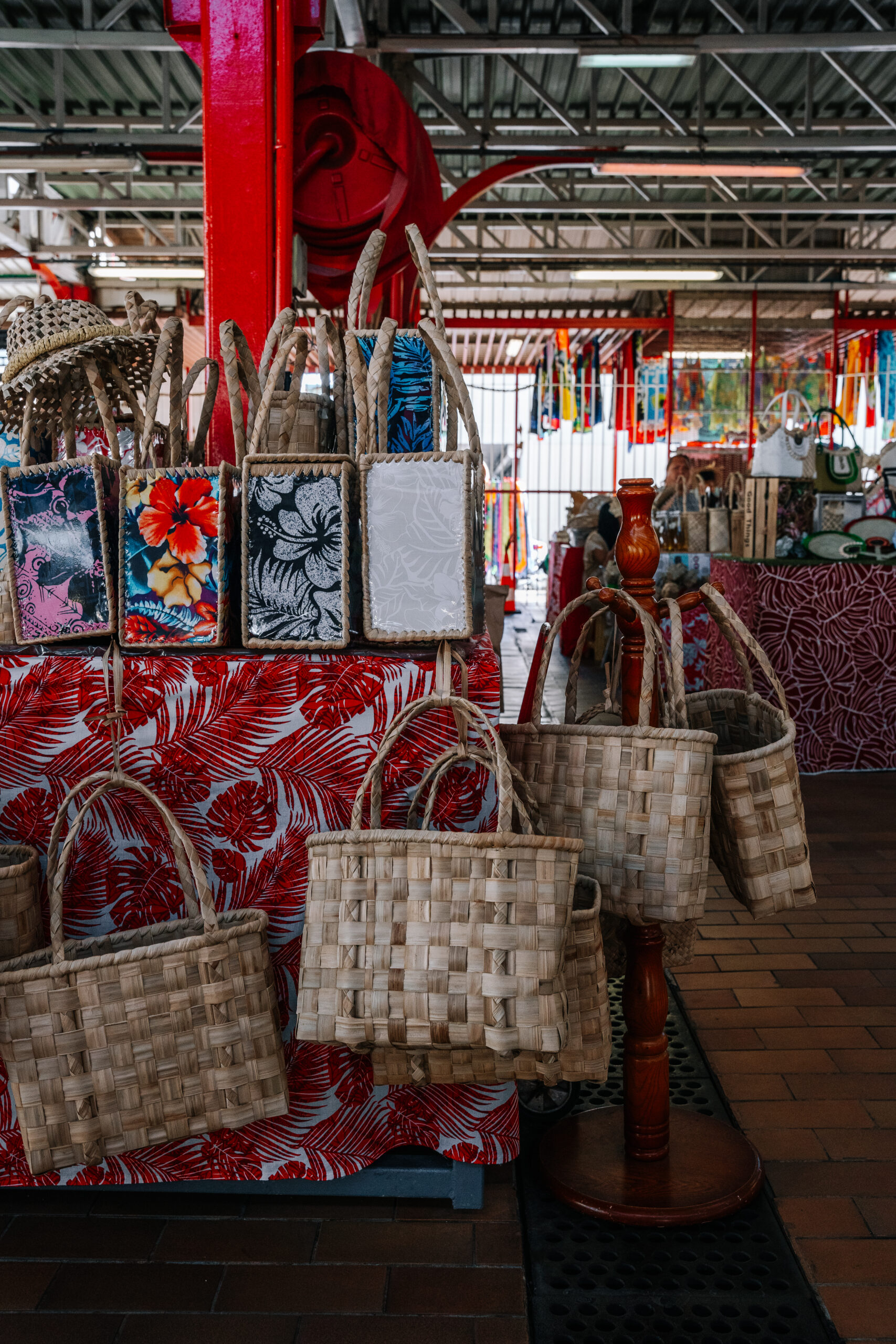
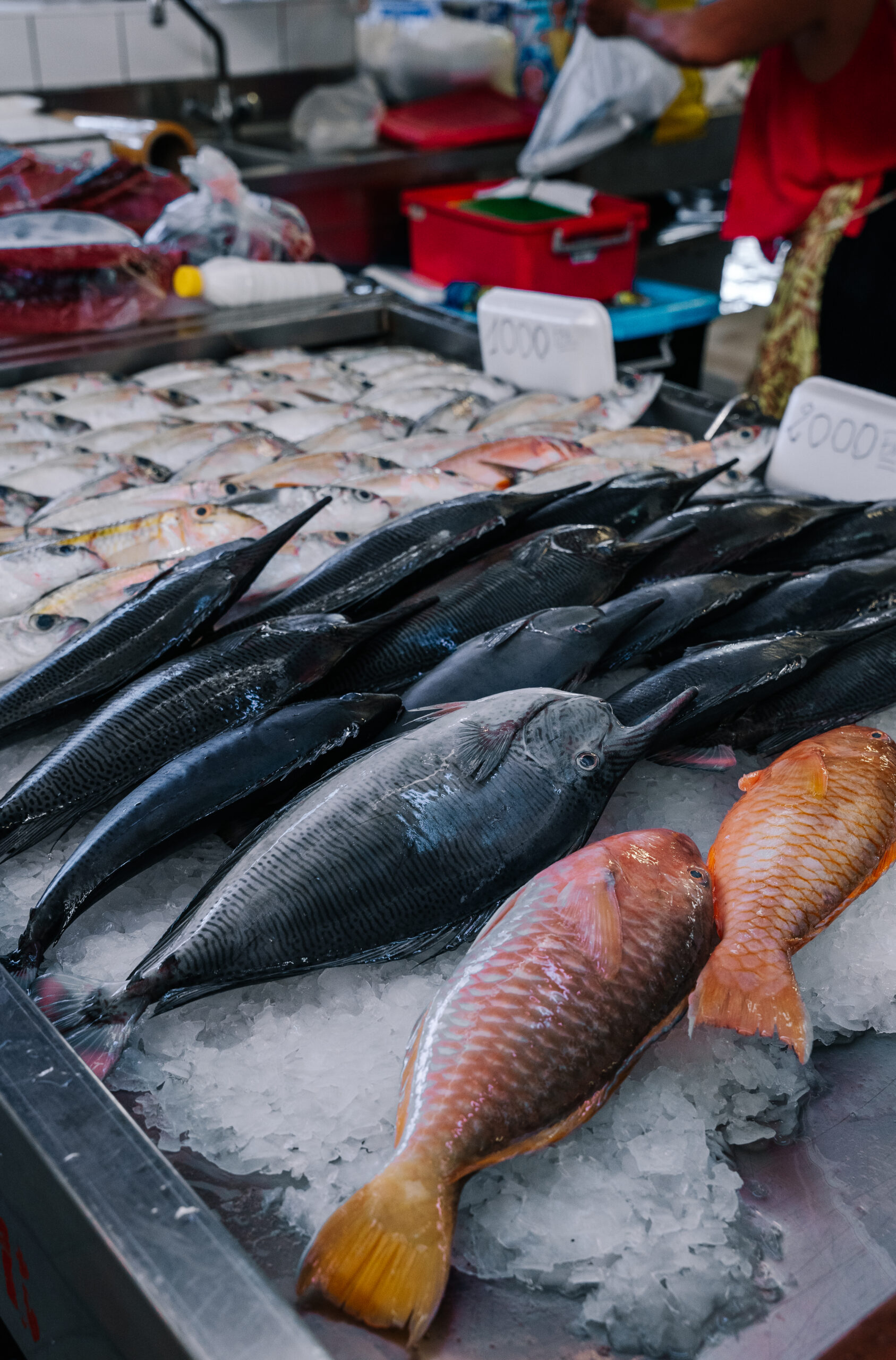
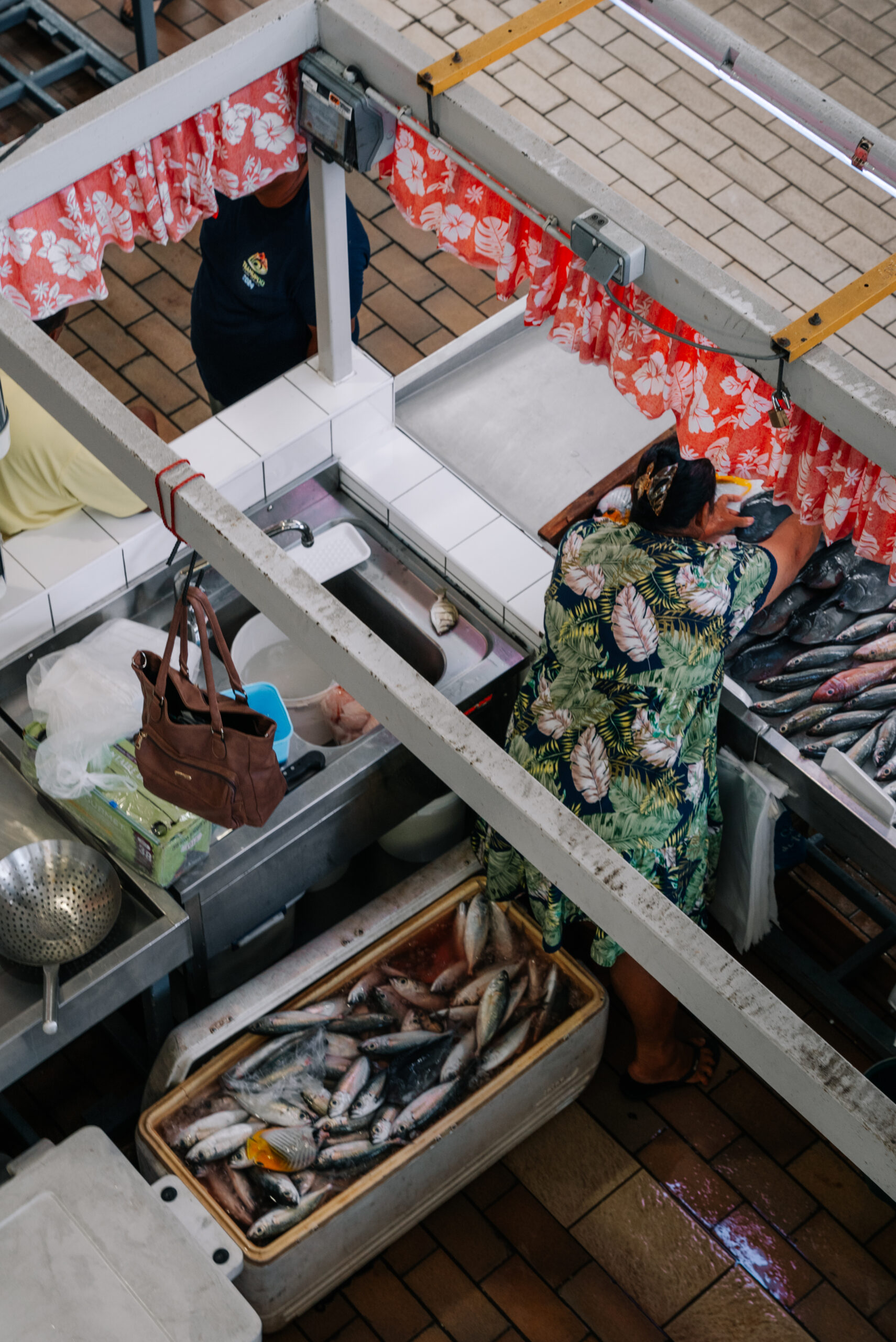

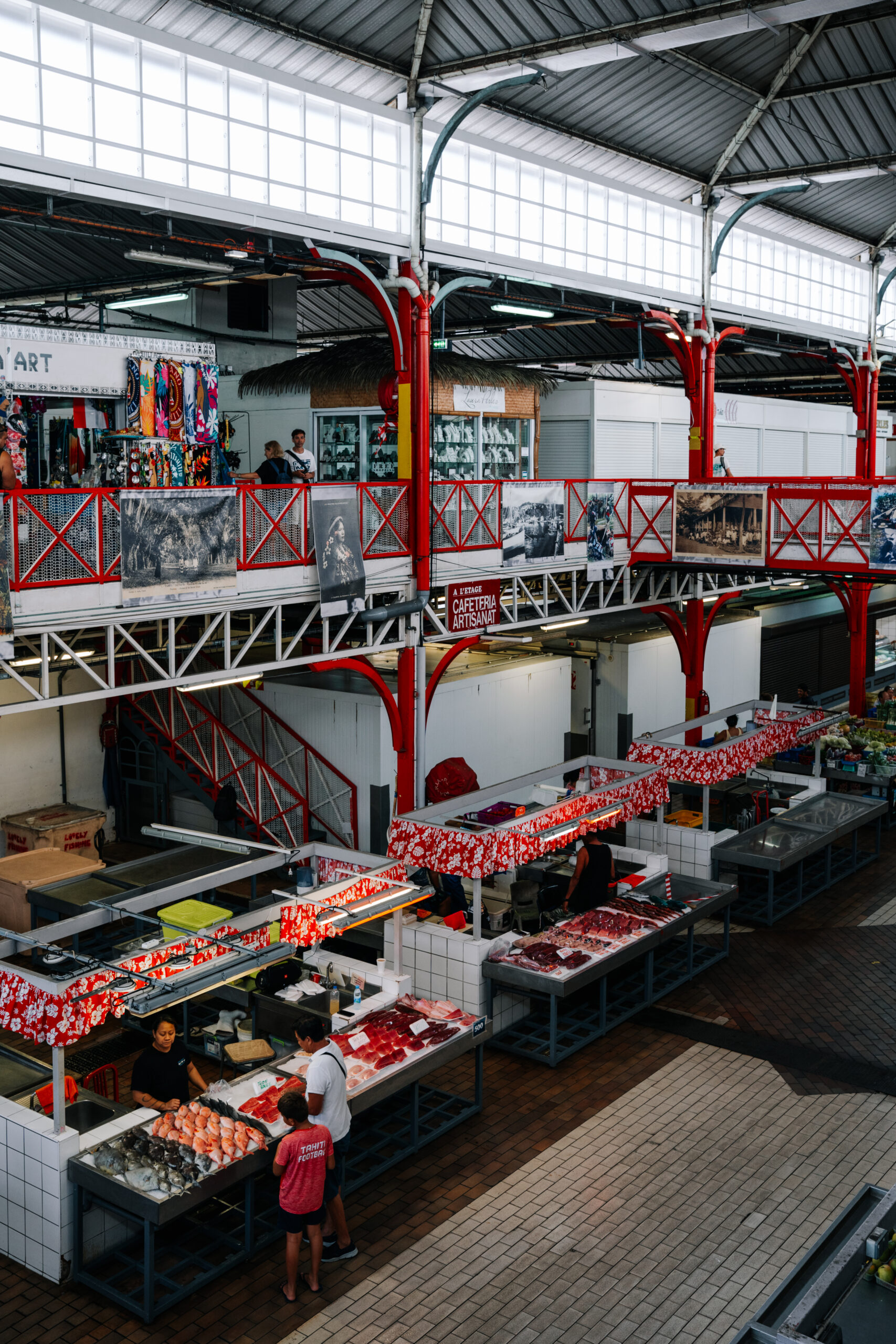
Moorea is a stunning, lush island known for its beautiful beaches, rich marine life, and cultural attractions. Just a 30-minute ferry ride from Tahiti, it's an ideal destination for those starting their Polynesian adventure. The island offers activities like hiking for panoramic views and boat trips to explore its picturesque coastline. Visitors can also enjoy water sports, visit pineapple fields, and observe sharks, stingrays, and vibrant coral reefs.
Moorea is often seen as a gateway to the more secluded and idyllic islands of Polynesia, but it's also a treasure in itself. Here are a few ideas for things to do on this lush island:
WHALE WATCHING – Seeing whales was a huge dream of mine. Humpback whales, known as gentle giants (they can weigh up to 40 tons!), are not only beautiful but also incredibly intelligent. The best time to observe them is from July to October, when humpbacks migrate to the waters of French Polynesia to breed. With a bit of luck, you might witness their impressive leaps out of the water or even hear their melancholic underwater songs. It was the most incredible experience of not only this trip but my whole life. Swimming so close to a mother whale and her calf, and being in direct view of her for a moment, was truly something out of this world. Apart from facing my own fear, it was a beautiful experience that made me realize how small we are as humans, compared to the earth and its underwater life, still largely unexplored. I highly recommend Moorea Moana Tours, who are professionals, and the owner has founded an organization that helps protect sharks and conducts research and public education on marine life.
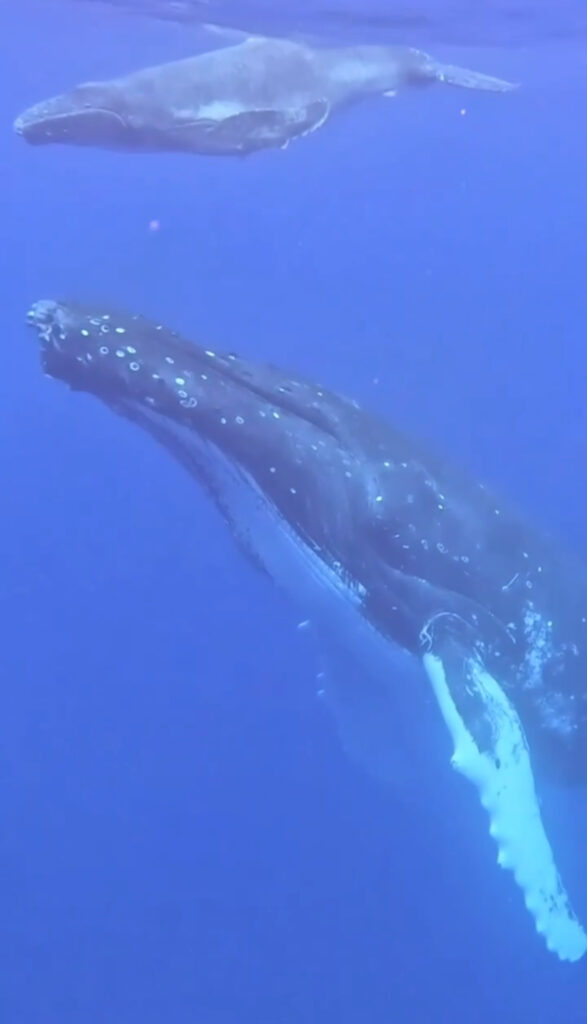
BEACHES – this is where you’ll find many beaches with white sand and turquoise water, the hallmark of French Polynesia. On Moorea, it's worth visiting the small Plage des Tipaniers, which, though part of a hotel, allows you to enter and rent a kayak. Right by Tipaniers Beach, you can explore the lagoon and… jump out of your kayaks to swim with sharks and stingrays, who swim freely among the kayaks and boats! If you're lucky, you may also spot a turtle. To get the exact location, search on Google Maps for Banc de sable raies et requins. The water is relatively shallow (around 160-170 cm). I also recommend kayaking to the small motu Tiahura to the Coco Beach restaurant for lunch (be sure to make a reservation beforehand). Public beaches include Temae – a lovely sandy beach with clear water, perfect for snorkeling, and Ta’ahiamanu (Opunohu) – a beach ideal for snorkeling or a picnic, away from the main tourist paths, with a view of the bay and sailboats, as well as Tiahura – a sandy beach shaded by palms, also perfect for a picnic.
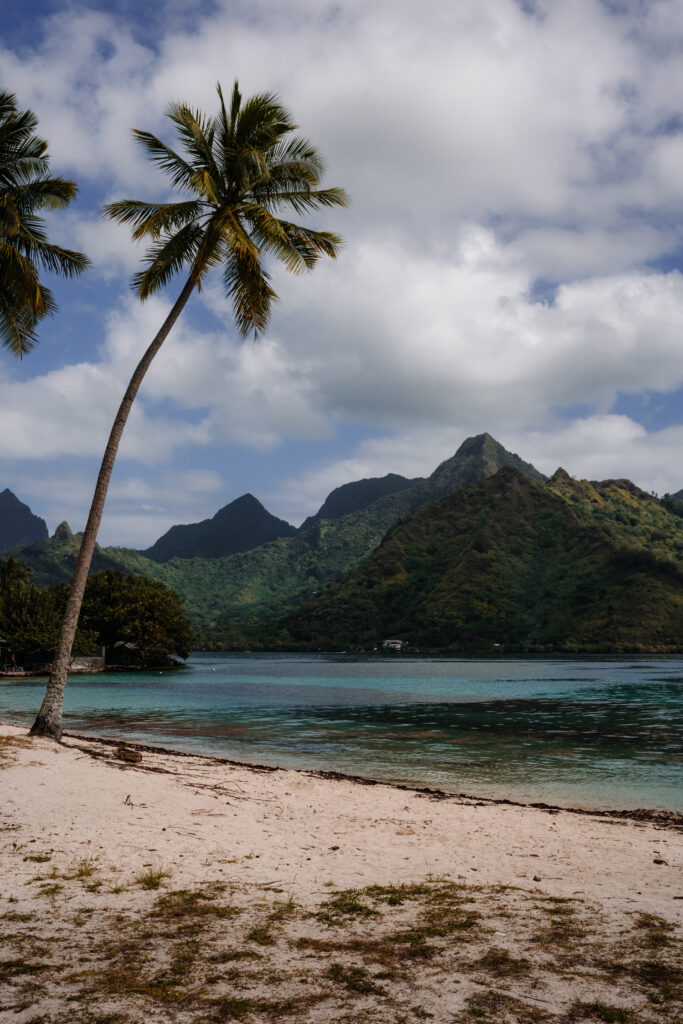
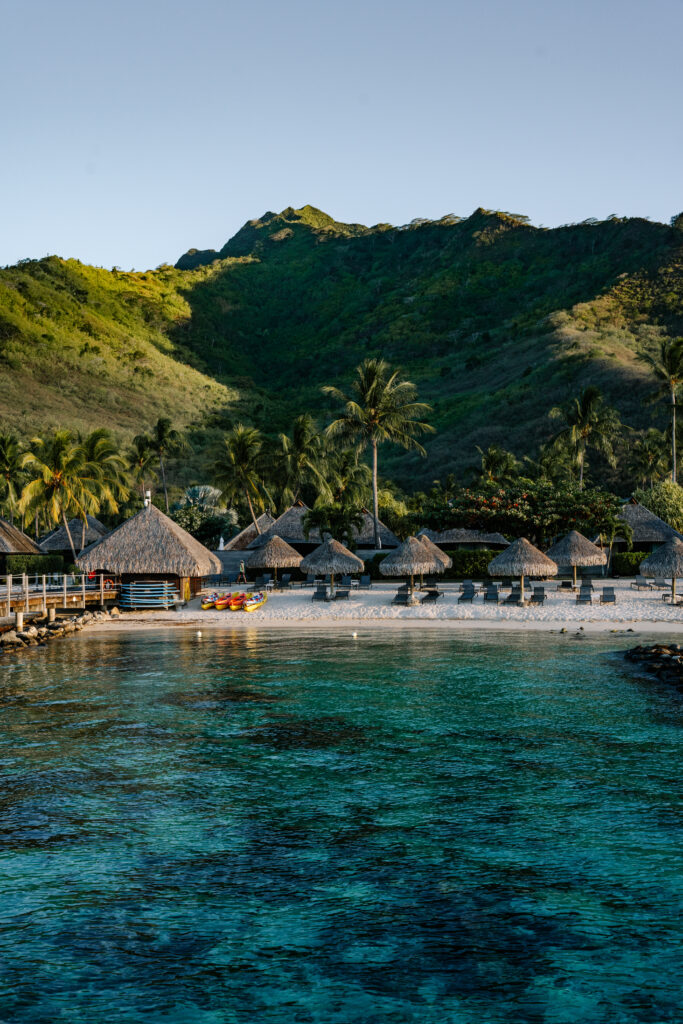
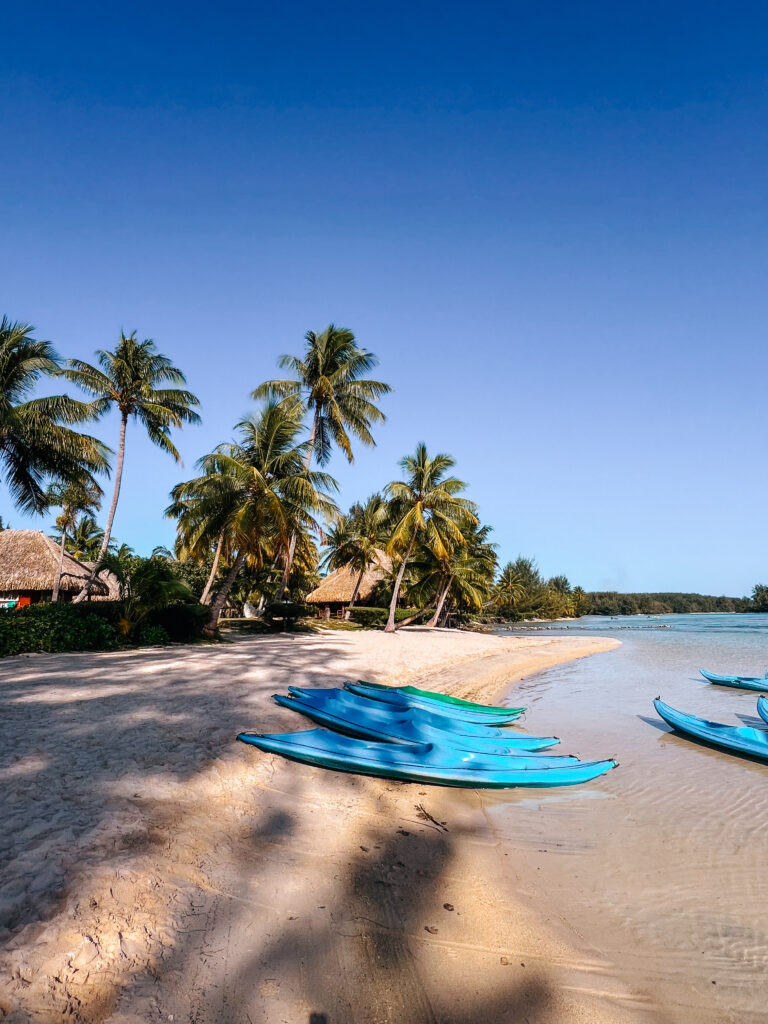
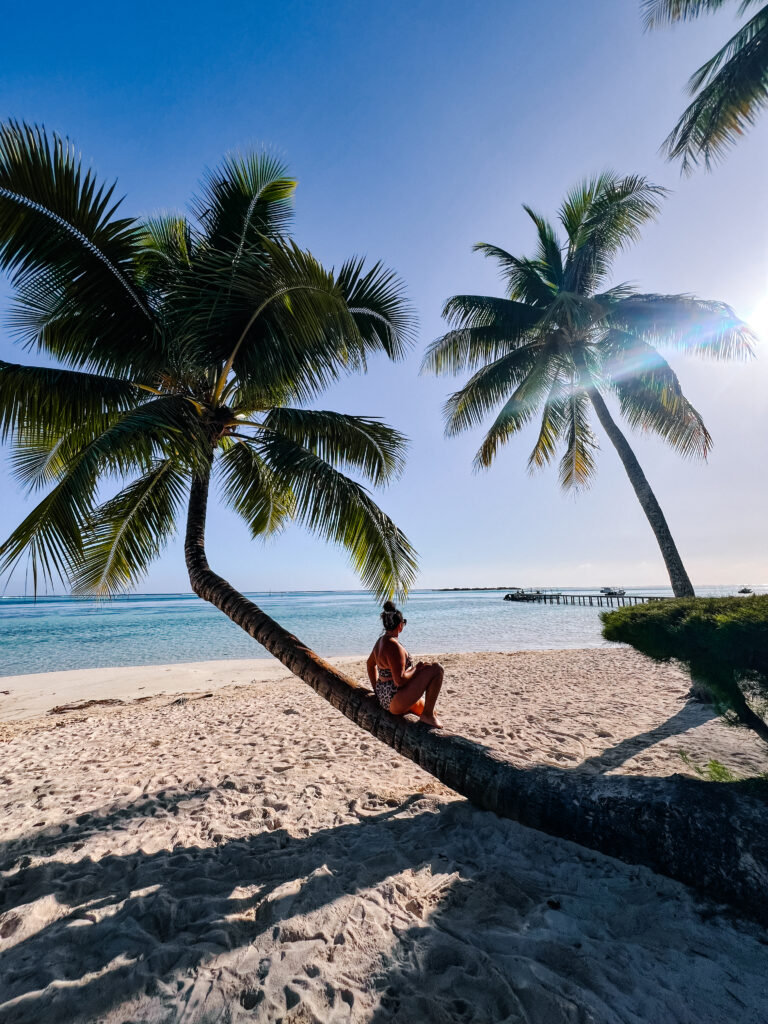

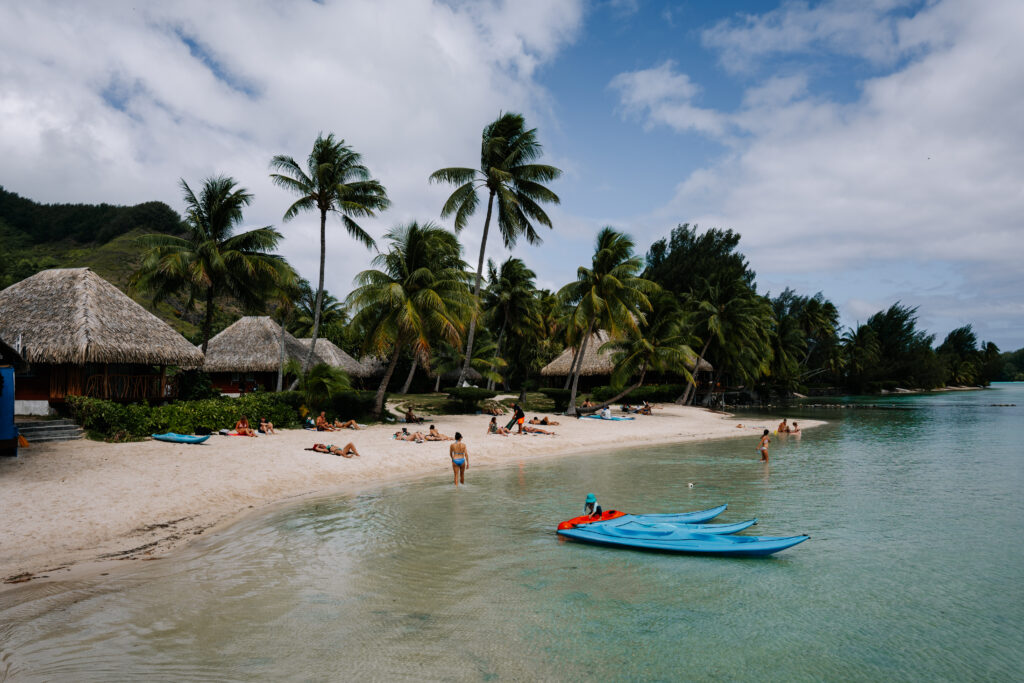
TREKKING AND BAYS – Moorea, with its lush, green jungle and dramatic mountains in the background, is a paradise for trekking enthusiasts. You can hike to the Col des 3 Pinus for a picturesque view of the mountains and the Cook's Bay and Opunohu Bay with sailboats swaying in the water, along with the Opunohu valley. For a more personal experience, consider an early morning hike to catch the sunrise at one of the viewpoints. Don’t miss the Belvedere viewpoint and the pineapple fields where Rotui juice is made, as well as the Afareaitu waterfall.
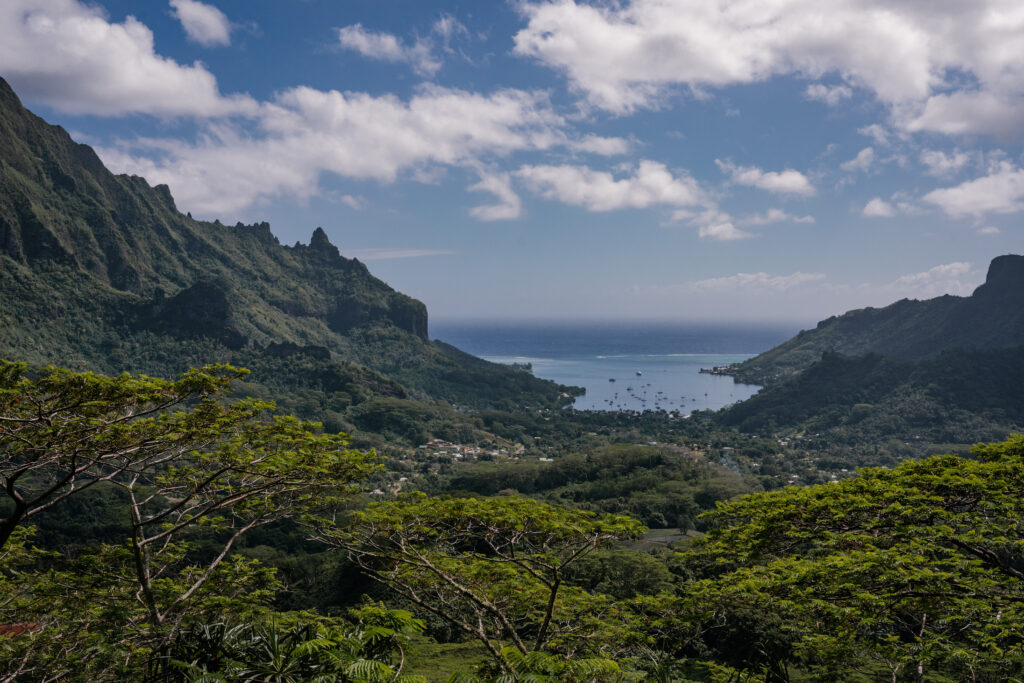
DIVING COURSES – French Polynesia is one of the best places in the world for scuba diving and snorkeling. In Moorea, Bora Bora, and many other islands, you'll find a wide range of courses, from one-day introductory sessions (less than 100 euros) to multi-day programs that culminate in a PADI certification. The waters are known for excellent visibility, sometimes up to 30 meters. During your dive, you’ll explore stunning coral reefs, underwater canyons, shipwrecks, and encounter turtles, dolphins, sharks, and majestic mantas.
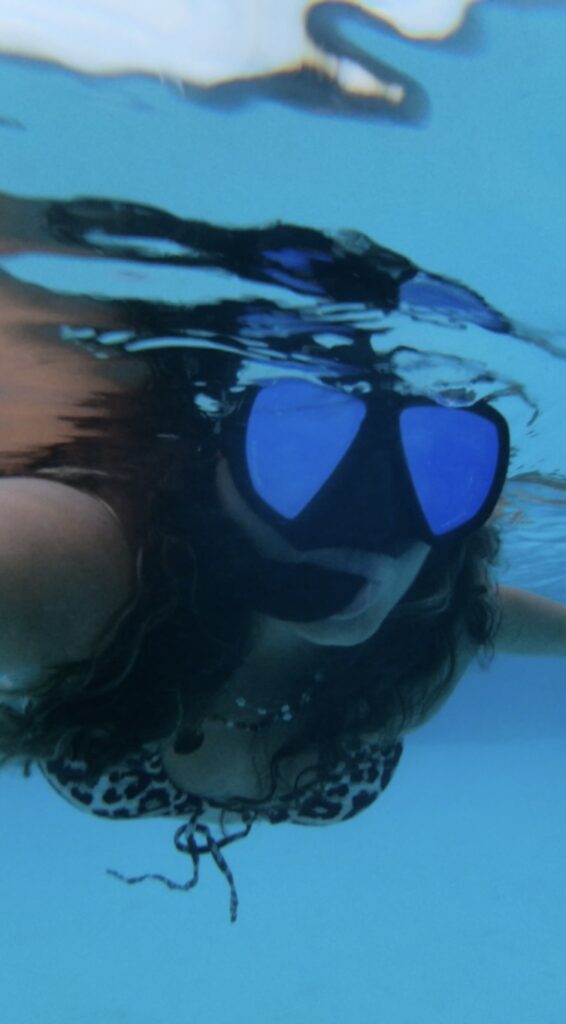
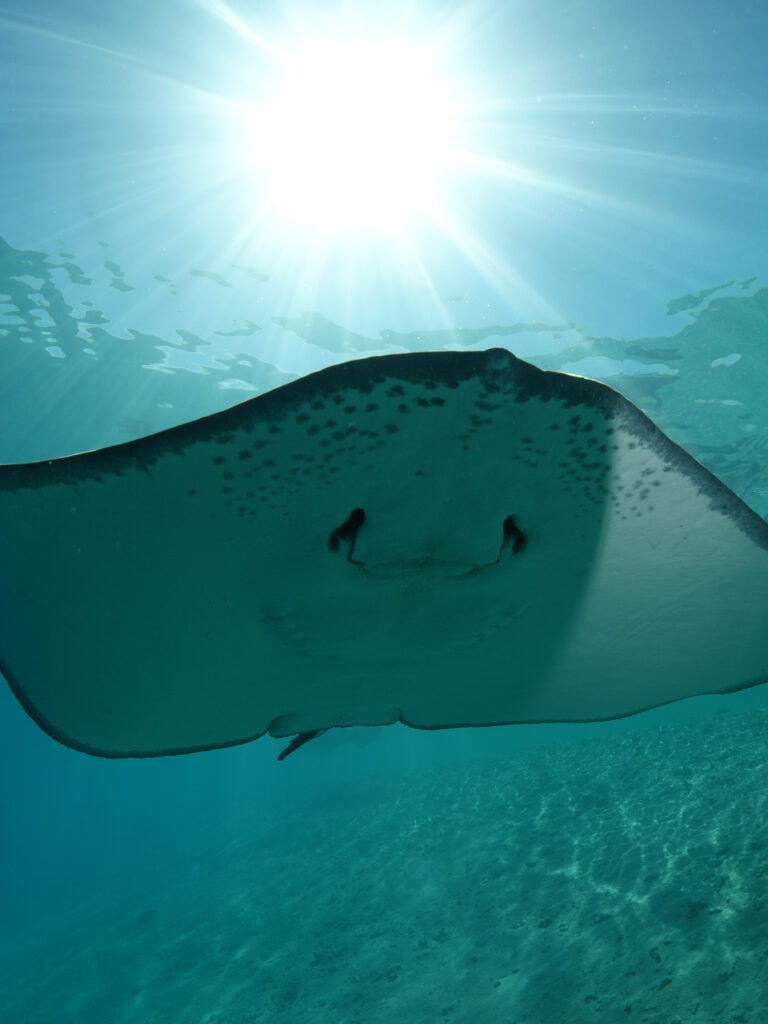

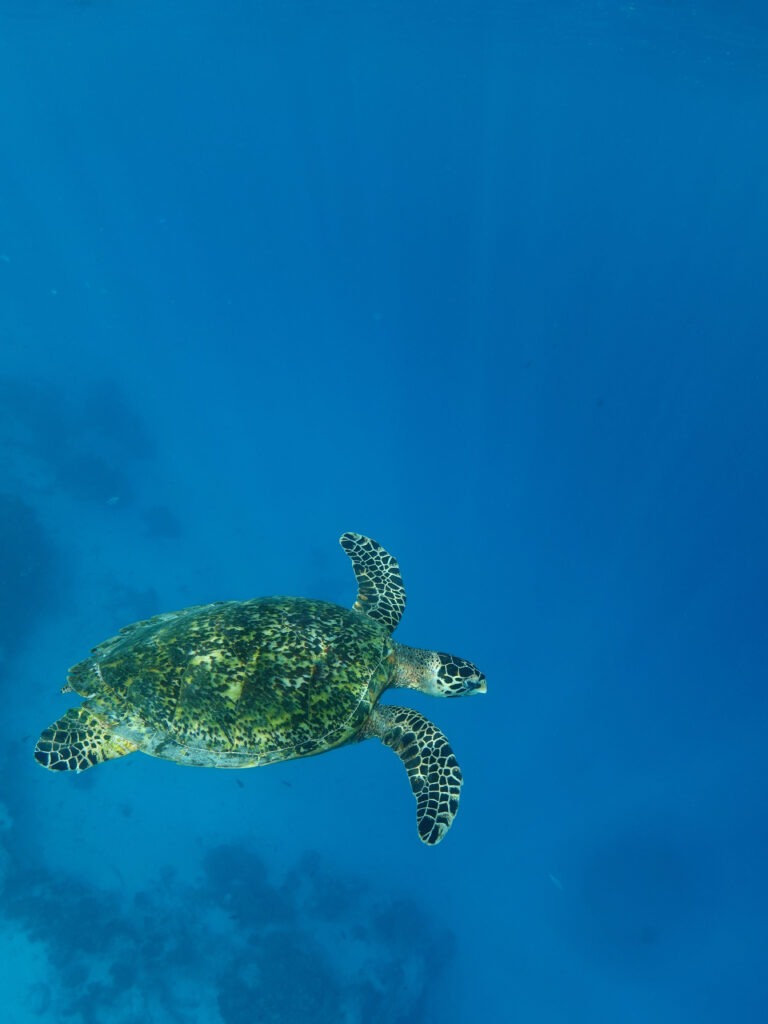
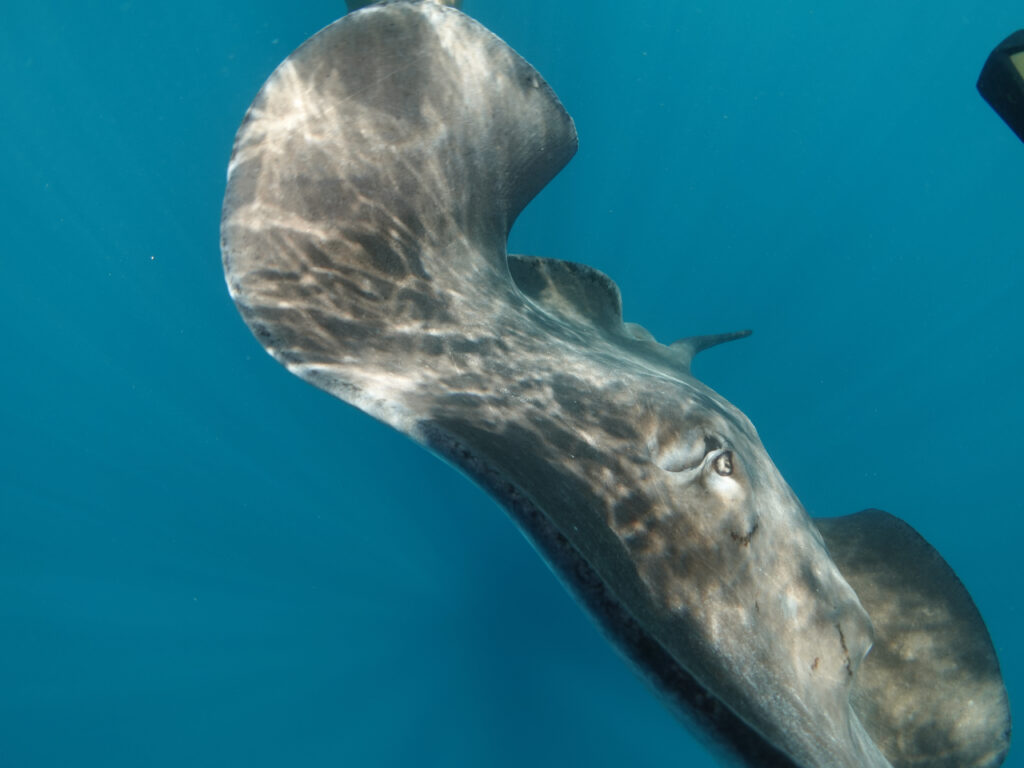
OVERWATER BUNGALOW – It’s not just a hotel, but an attraction in itself, offering a luxurious experience surrounded by nature. The luxury here is not only in the beautiful interior but also in the peaceful mornings, sipping coffee on the terrace while watching marine life and enjoying the colorful waters and sky. French Polynesia is famous for its overwater bungalows, which offer stunning ocean views and direct water access, allowing you to start your day with a swim or snorkeling. At the Manava Beach Resort in Moorea, mornings with the sound of waves and the first rays of sunlight were magical. The hotel also provides free snorkeling equipment.

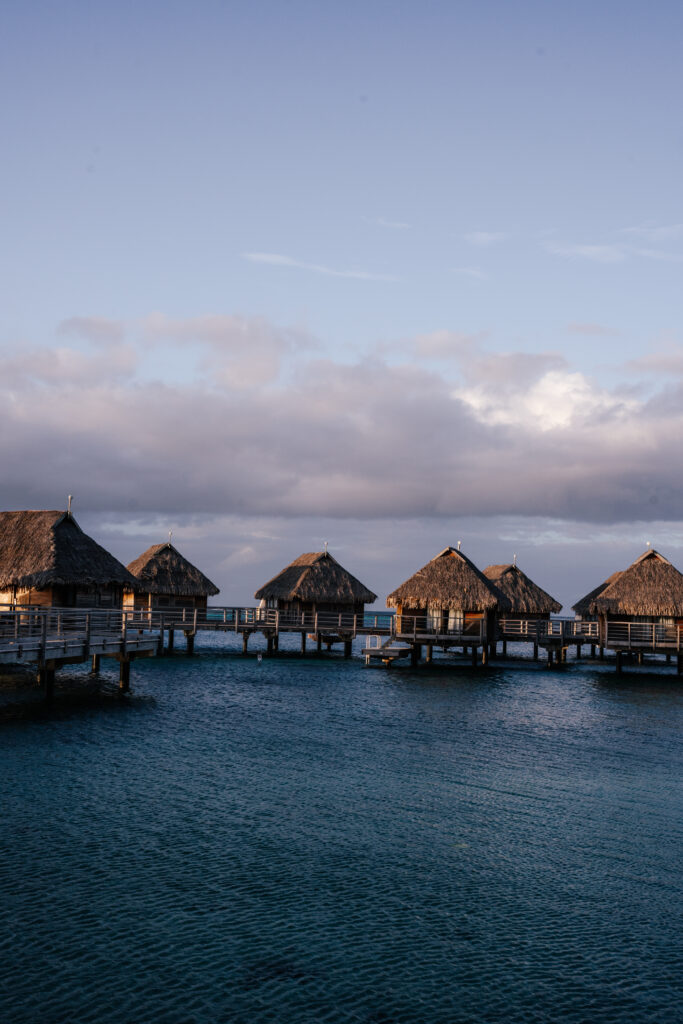


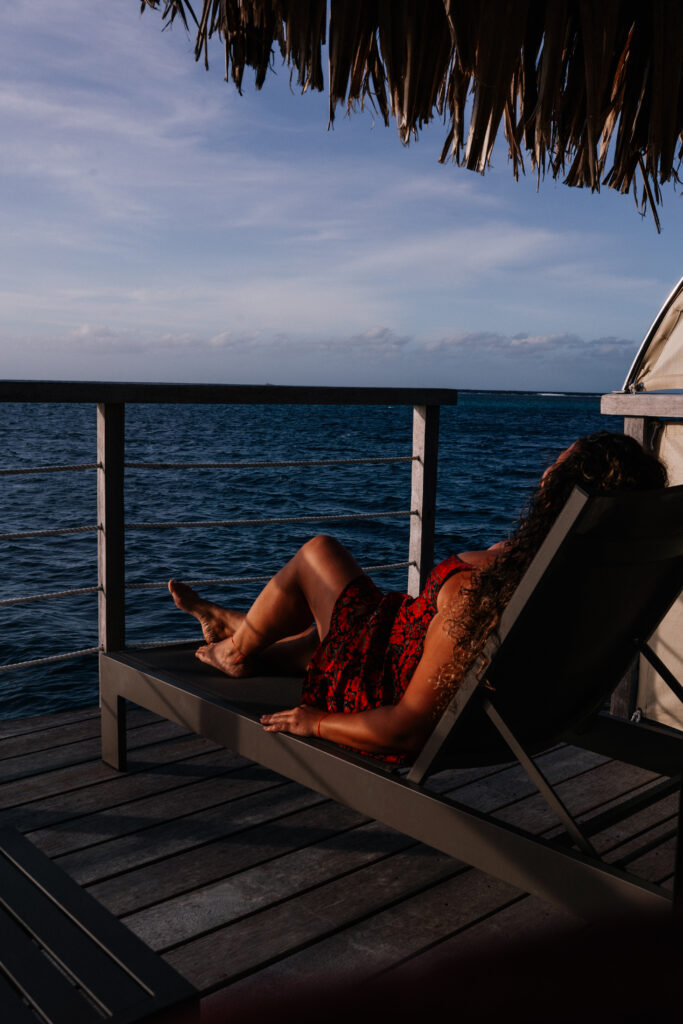

TIKI VILLAGE – Visit the Tiki Village cultural center to experience Polynesian culture through workshops, such as traditional necklace making, cooking, and bag weaving. With a bit of luck, you might witness a traditional Polynesian wedding, complete with local dances, songs, and music. It’s a great place to learn about Polynesia’s rich history and immerse yourself in its traditions. My pro tip: behind the village, there’s a small beach where you can watch the island's most beautiful sunset.

BEST PLACES TO STAY IN FRENCH POLYNESIA::
LUXURY: Manava Beach Resort & Spa Moorea
A stunning luxury hotel with overwater bungalows and beachfront cottages. I had the pleasure of staying in one of the overwater bungalows, which offered privacy and beautiful views of turquoise waters that transition to navy blue. The sound of the waves surrounds you, and colorful fish, turtles, rays, and even sharks swim beneath. The hotel offers free snorkeling gear and kayaks, and there's a spa for ultimate relaxation. Shops and restaurants are just a short walk away, making it an ideal spot for both relaxation and exploration.

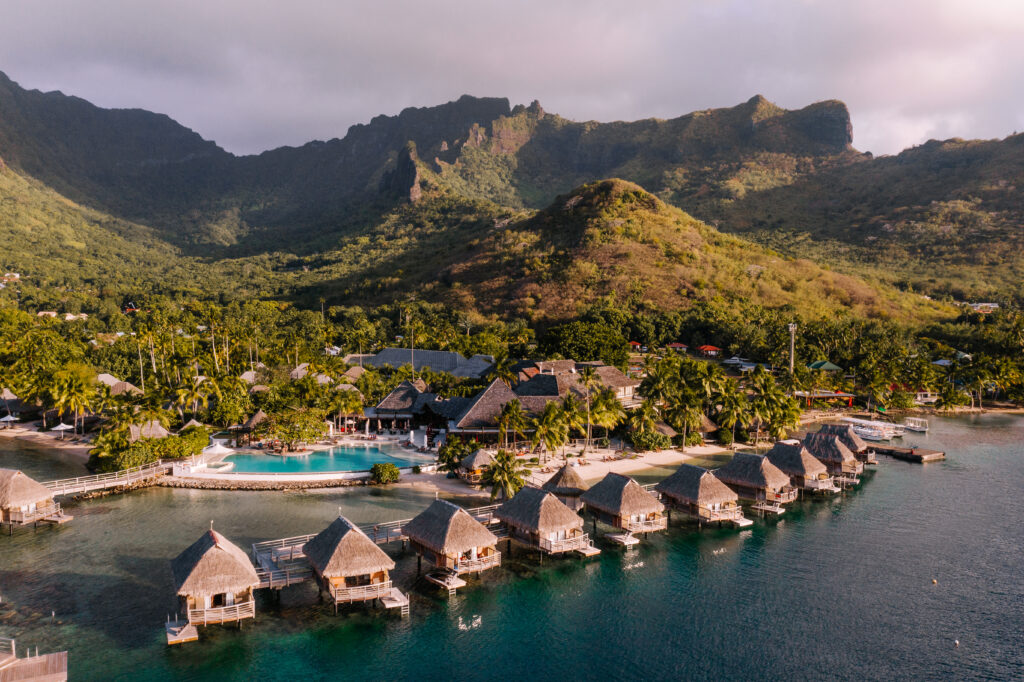
FAMILY: Niu Beach Hotel Moorea
A charming beachfront hotel with overwater bungalows that include fully equipped kitchens and direct beach access from the terrace. Guests can enjoy free use of kayaks right outside their bungalow. With delicious breakfasts and a small, intimate setting, this hotel offers a peaceful and comfortable atmosphere. It's an ideal spot for families or couples looking for tranquility and a private escape.
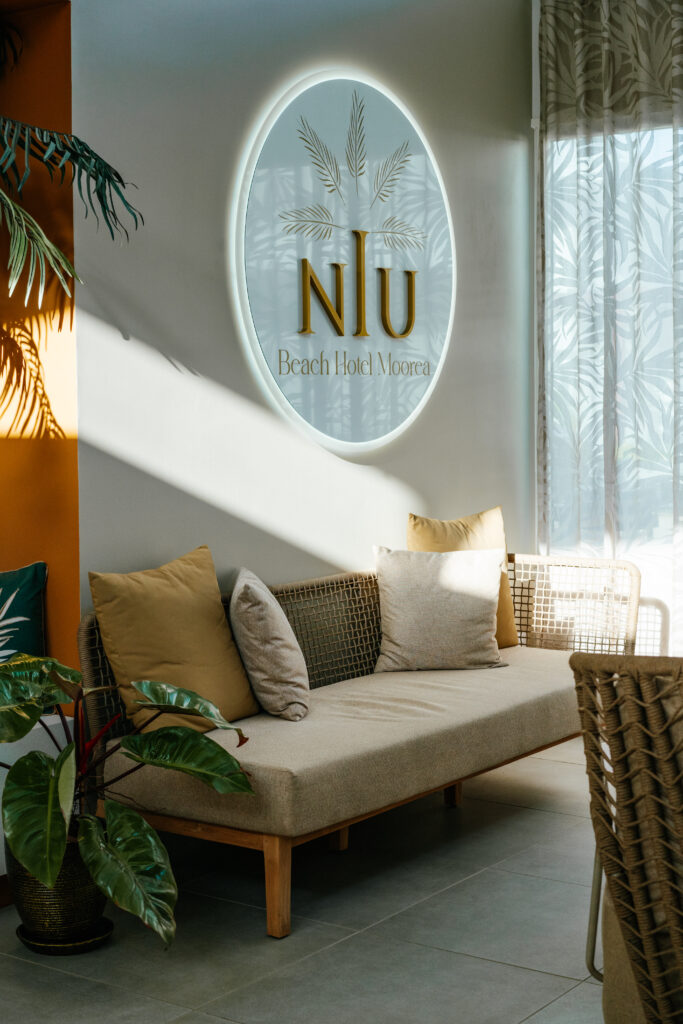
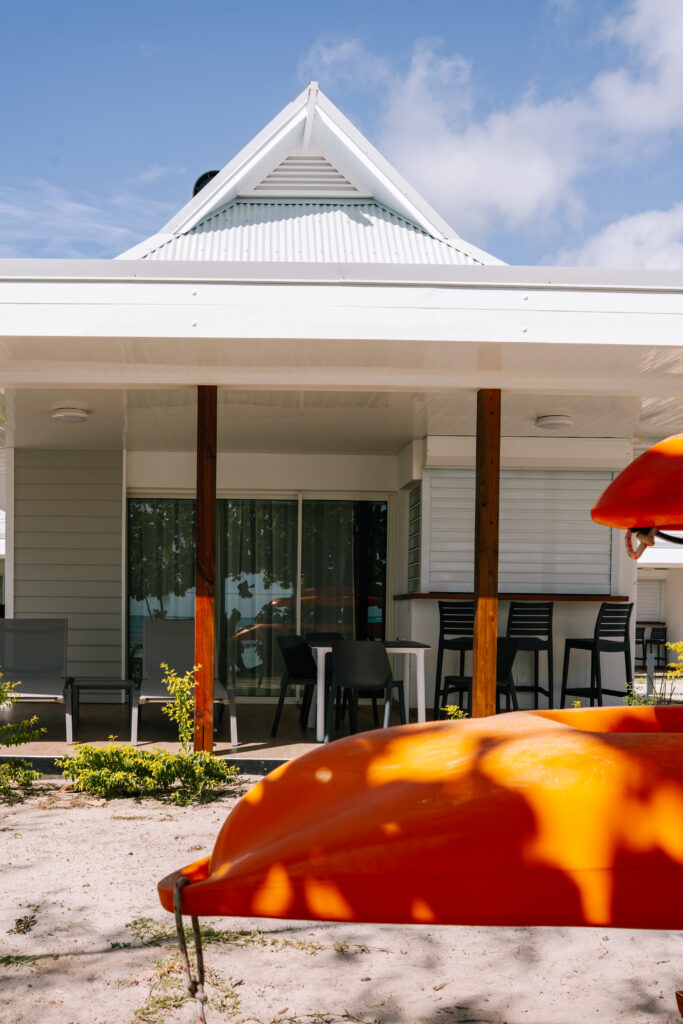
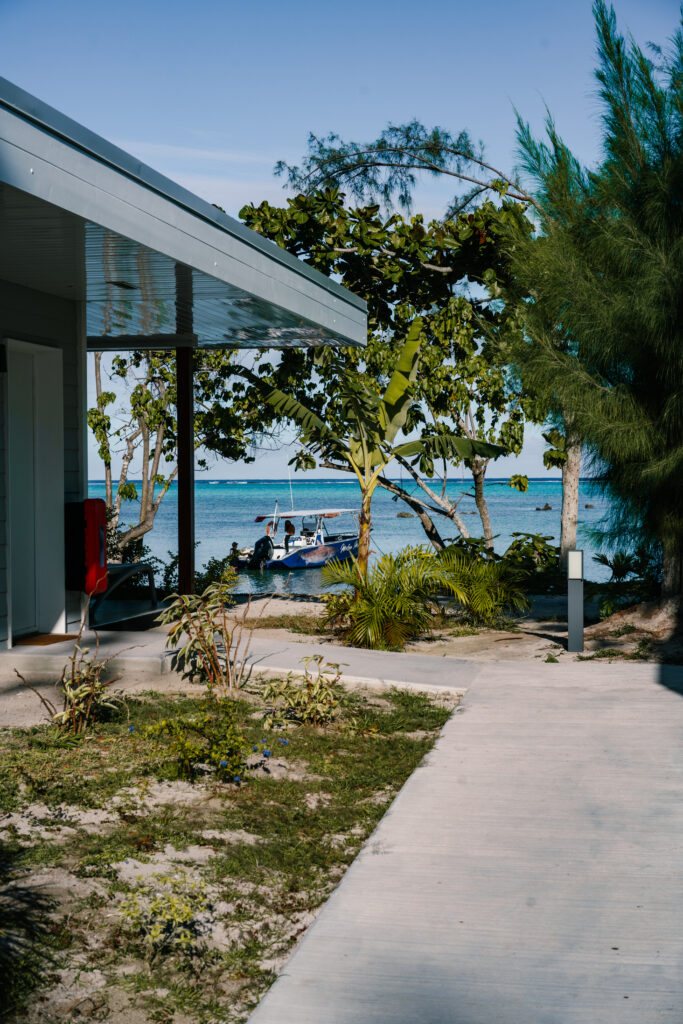

BUDGET: La Maison Orange
A small family-run guesthouse with a few bedrooms, a shared kitchen, and a terrace. Some rooms have private bathrooms, while others share one. The house and rooms are spacious and clean. Ideal for those who enjoy meeting new people while cooking or enjoying coffee or beer on the terrace. It's located close to the beach and shops.
BEST PLACES TO EAT:
Snack Mahana RESA is a great spot to try mahi mahi fish in coconut milk, one of the best fish dishes on the island. The bar is beautifully located by the ocean, offering an outdoor terrace. It’s open from 11:00 to 15:00, so it’s recommended to visit around noon, as the kitchen might stop serving after 14:00.
Taoahere Beach House Snack is a charming small bar located by the water, offering delicious food and a very friendly, local experience. It’s a great spot to enjoy the view and taste some local flavors in a laid-back atmosphere.
Casa Vincenzo – For those looking for a break from seafood, this place serves really delicious pizza. It's a great option if you're craving something different while still enjoying the laid-back, local atmosphere.
Toatea Crêperie & Bar – A bar and creperie located in the Hilton hotel. Be sure to make a reservation. It's a great spot to visit, especially if you're not staying in an overwater bungalow. You can enjoy delicious crepes while watching sharks and rays swim right beneath your feet.
Moorea Maitai – A tiny bar next to the Manava Hotel, offering delicious fresh fish and fish burgers.



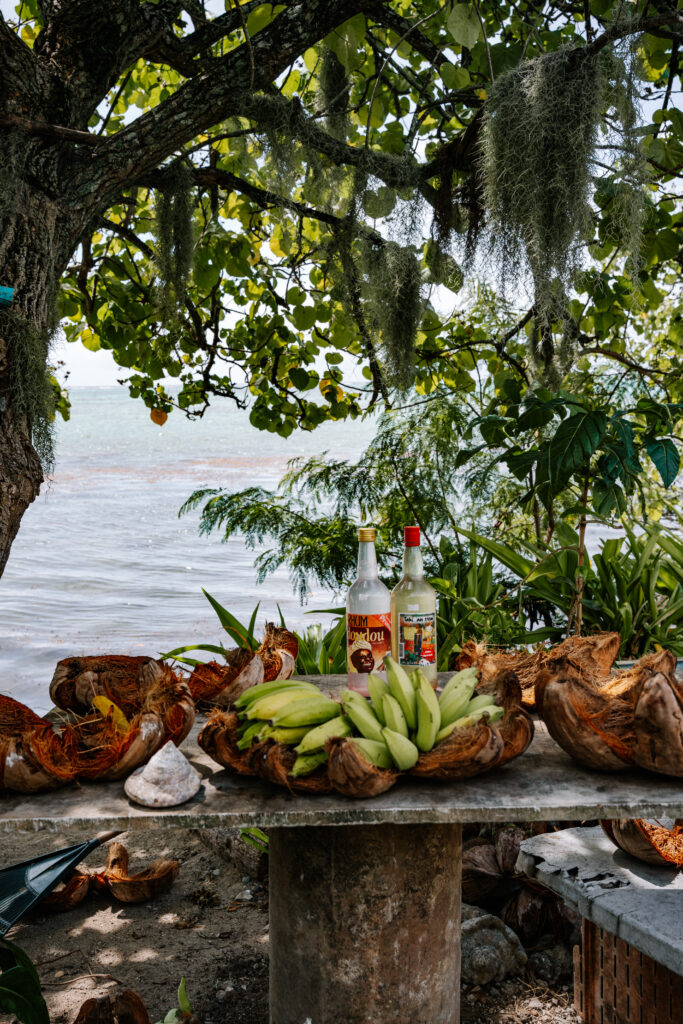
Beautiful green island and a very important center of Polynesian culture. Unfortunately, I had to shorten my stay significantly and didn't manage to see everything the island has to offer. After my phone turned out to be far from waterproof after the previous lens replacement, and completely refused to cooperate, I had to leave the island much earlier. Instead of the planned flight to Bora Bora, I spontaneously flew to Tahiti, to the nearest (and actually only) GSM service.
Raiatea is an important island for Polynesian culture, home to the central coastal temple, Marae Taputapuatea, overlooking the lagoon surrounding the island. This religious and historical center, with its stone structures and platforms, was once used for local ceremonies and offerings. It remains a significant site in Polynesian heritage.
It’s worth going snorkeling around the motu Ofetaro or in the coral gardens near the village of Tevaitoa, where you can enjoy vibrant marine life and crystal-clear waters. These spots are great for underwater exploration in a beautiful, tranquil setting.
I highly recommend staying at the small family-run guesthouse B&B chez Maeva. Maeva, the owner, is incredibly kind and welcomed me like family. She also helped me a lot when I lost my phone, contacting my loved ones and even driving me to the airport. Not only did she assist me, but she also showed me a part of the island and promised to organize a tour of Raiatea when I return.
For active summer lovers, Raiatea offers plenty of places to rent scooters or bikes to explore the island, stopping at beautiful beaches for picnics or snorkeling. Along the way, you'll find archaeological sites. You can also enjoy hiking with scenic views of the lagoon or rent kayaks. A unique gem on Raiatea is the Rivière De Faaroa, the only navigable river in French Polynesia.
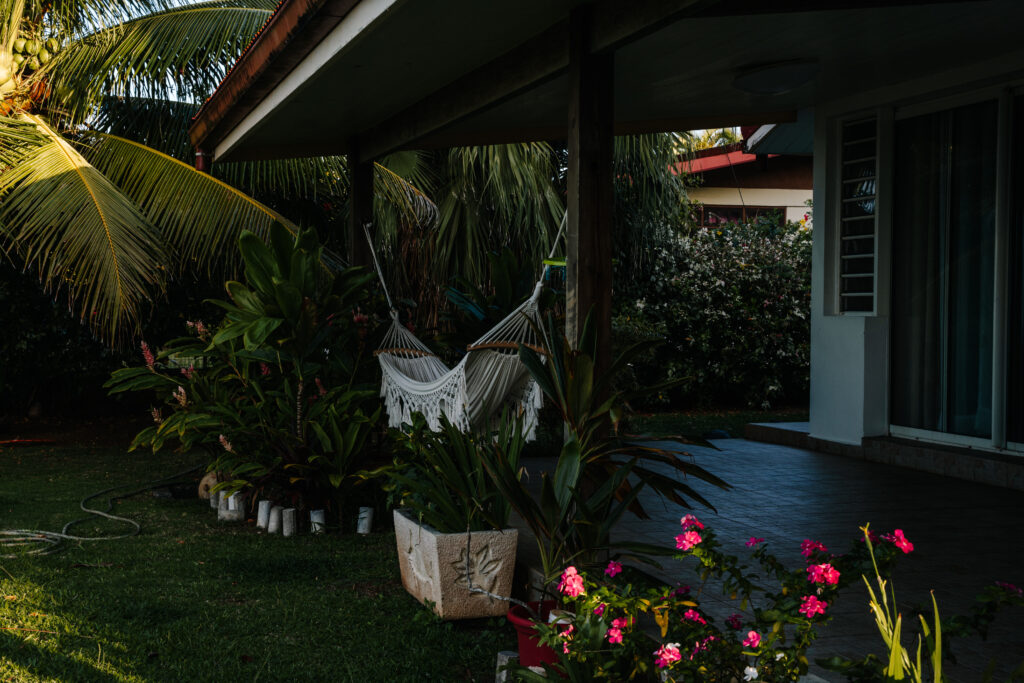


Taha’a, located near Raiatea, is known for its stunning coral reefs and offers a range of attractions like a rum distillery, a pearl farm, and a vanilla factory. Visitors can enjoy luxury accommodations such as the overwater bungalows at Le Taha'a by Pearl Resorts, where the serene azure waters and towering palms create an idyllic atmosphere. It's a perfect destination for a day trip from Raiatea, offering both natural beauty and cultural experiences.
The beautiful lagoon invites swimming, and the coral reef is located in a narrow passage between two small islands, making it easy to float on the water's surface with a snorkeling mask. The gentle current pushes you forward, revealing the underwater world and thousands of colorful fish. It was the most visually stunning experience in all of Polynesia, and I highly recommend visiting here for snorkeling.
A visit to the pearl farm was incredibly interesting – you can closely observe the process of creating famous Polynesian pearls. Taha’a is also renowned for vanilla production. At a local plantation, you can purchase fresh, aromatic vanilla and learn about its natural production methods. At a small family-owned rum distillery, you can discover the rum-making process and sample rum with an alcohol content of 50%.
Half-day or full-day tours in Taha’a cost around 100-150 euros, and private boat rentals are available. I highly recommend guided tours, as they know the best spots to observe sharks, whales, turtles, and rays, which can be difficult to find on your own, especially if you're only visiting Polynesia for a short time.
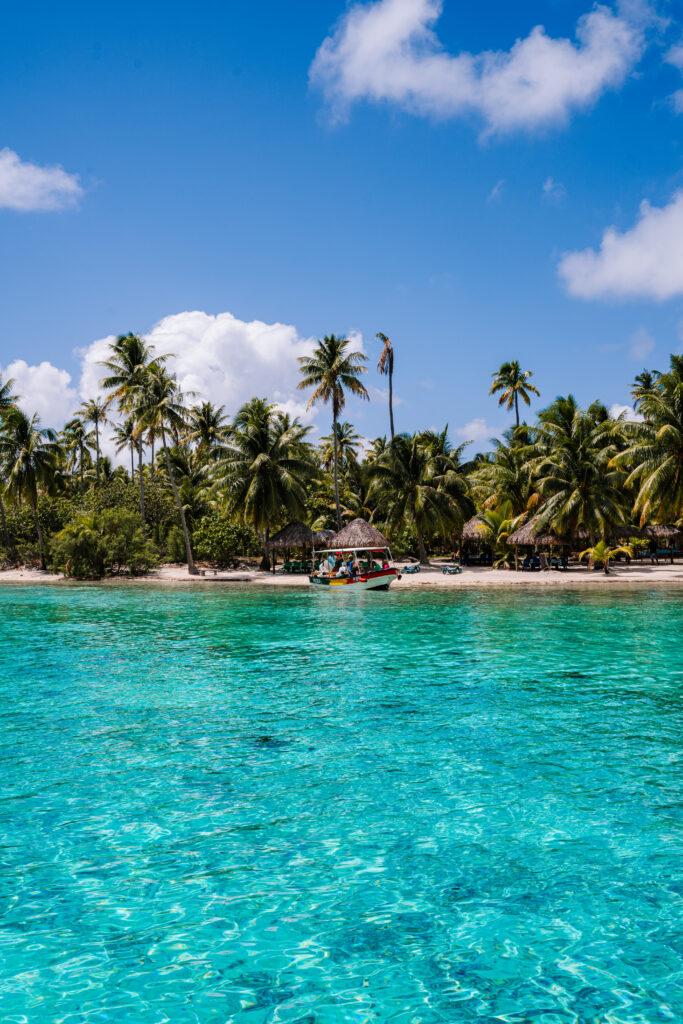
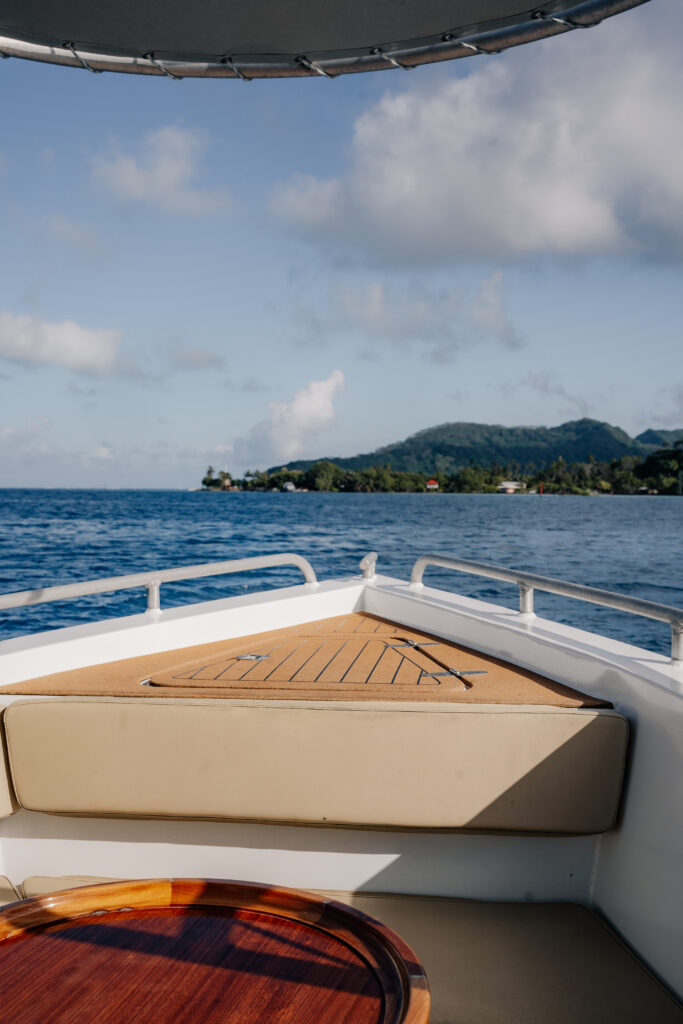
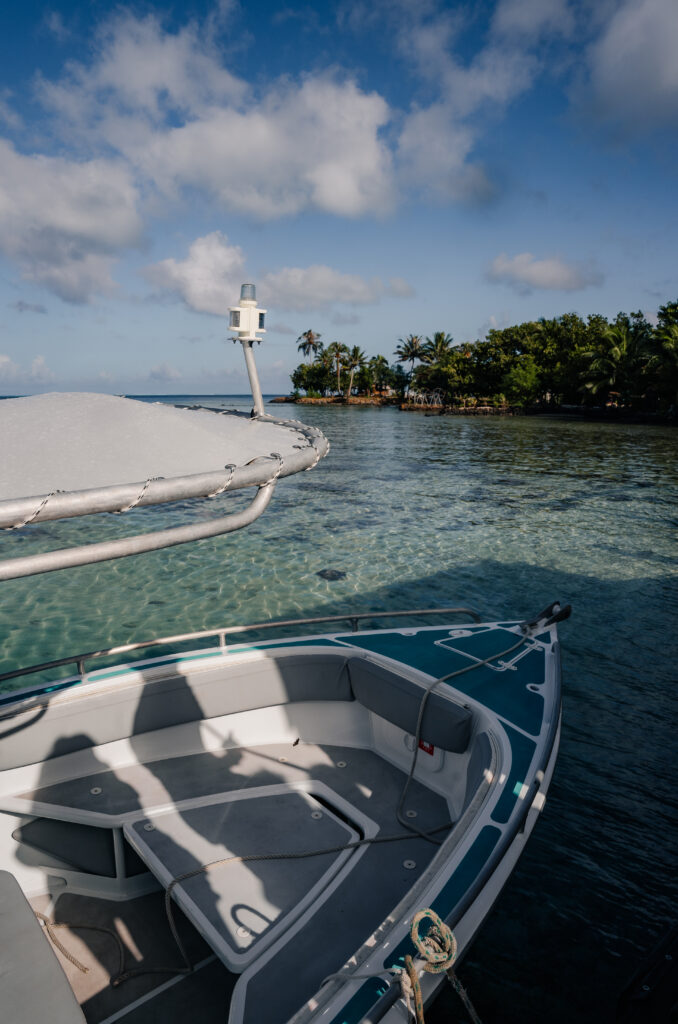
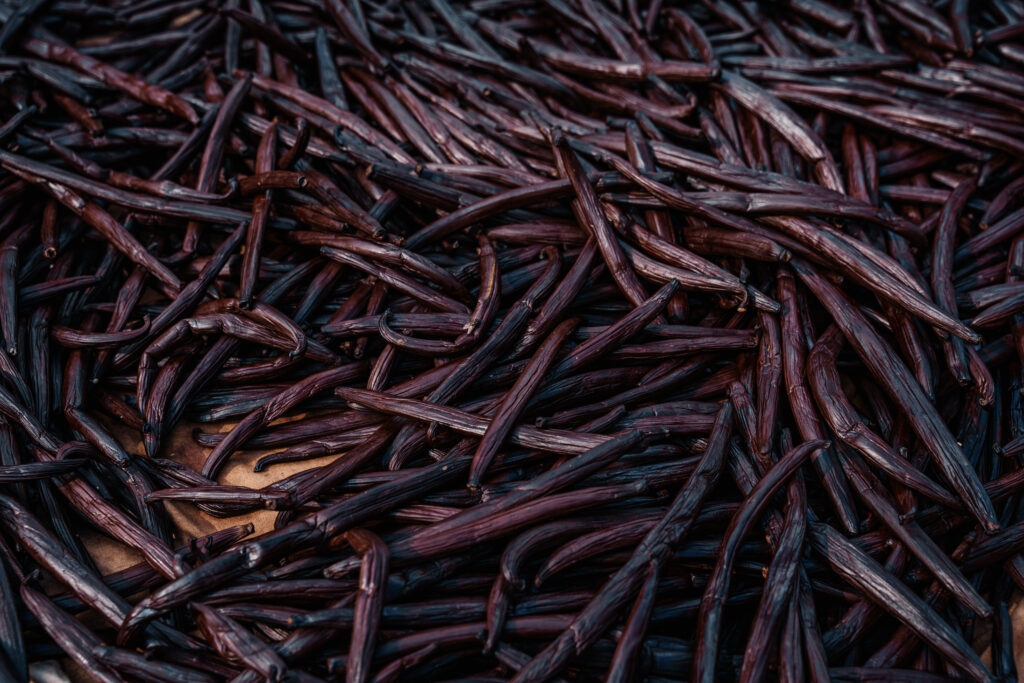
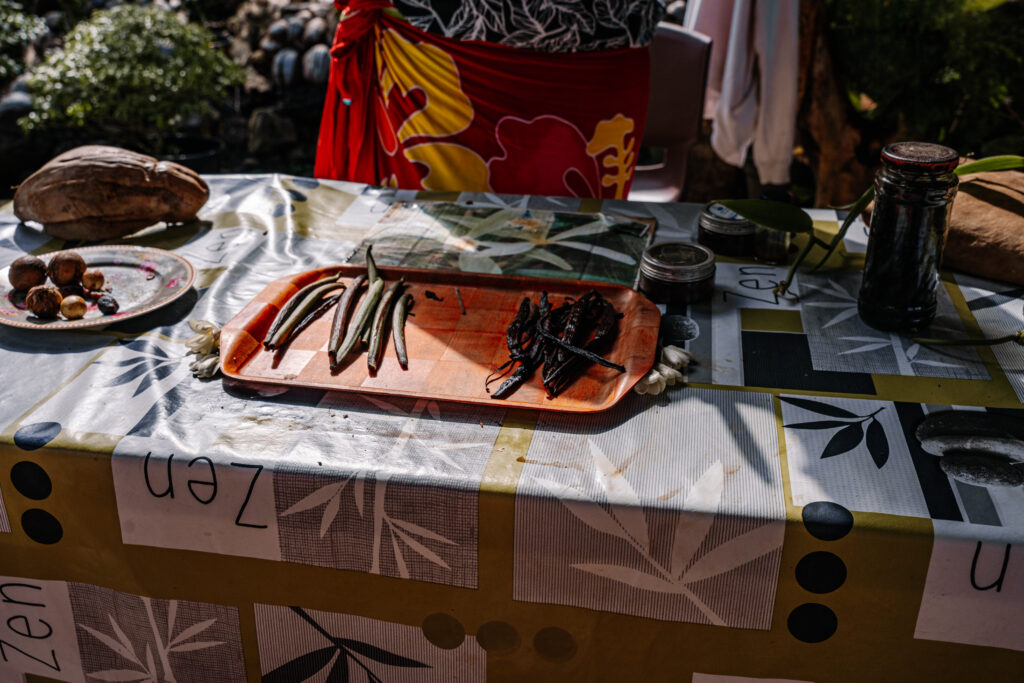
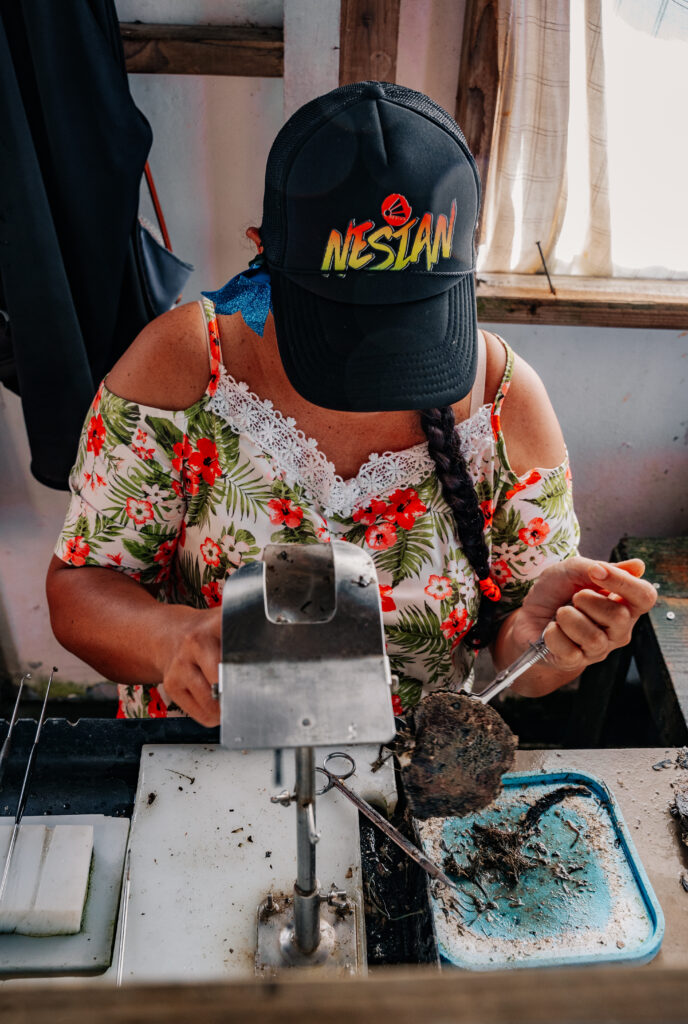

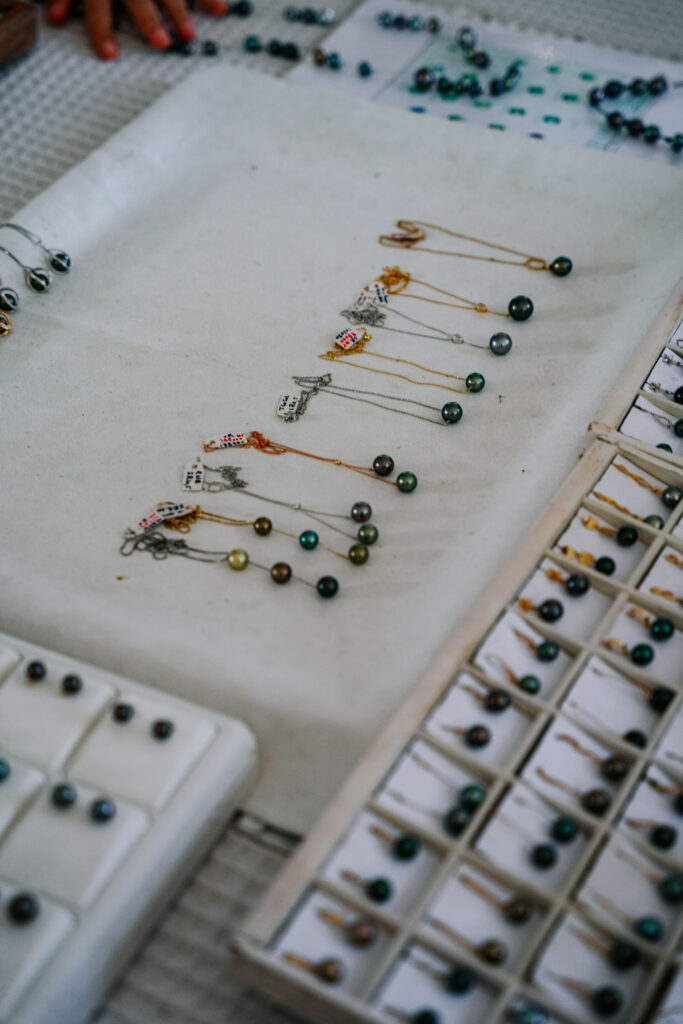
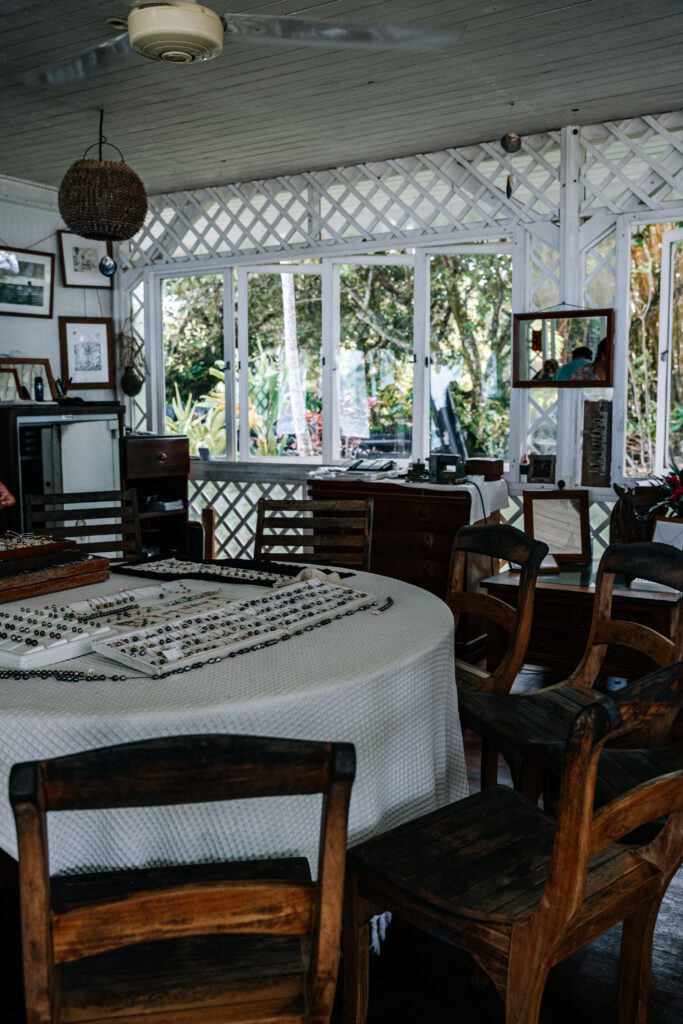
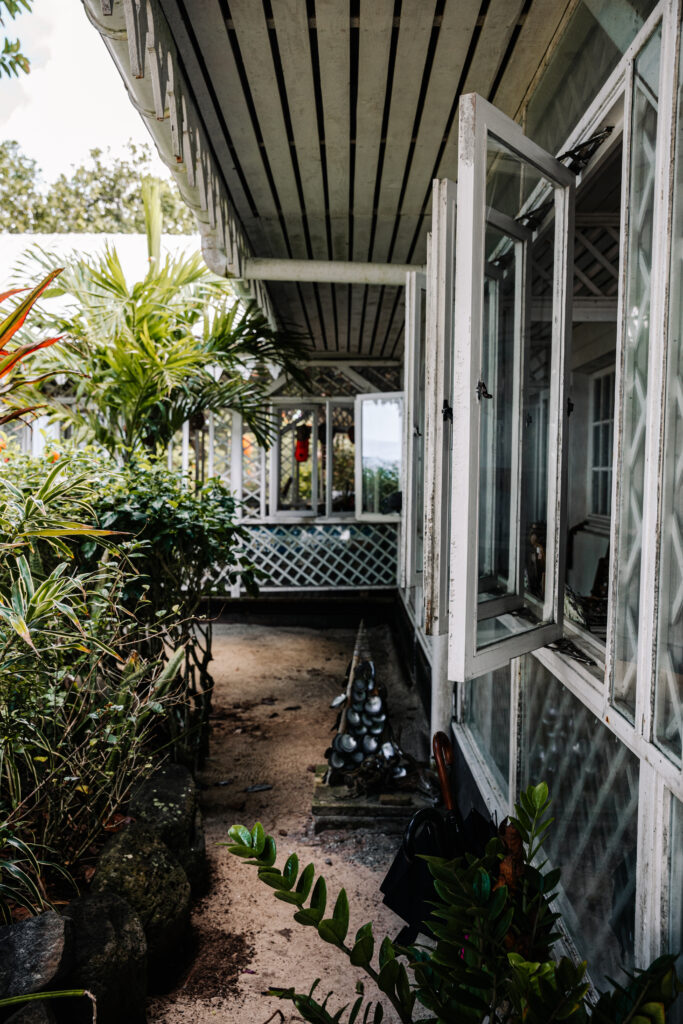
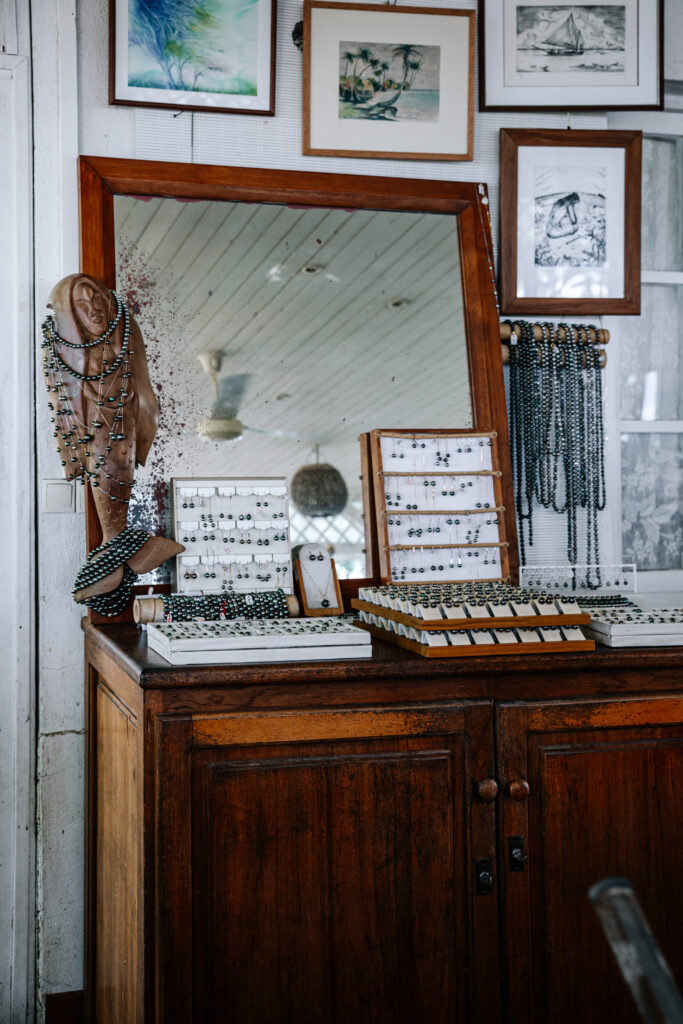
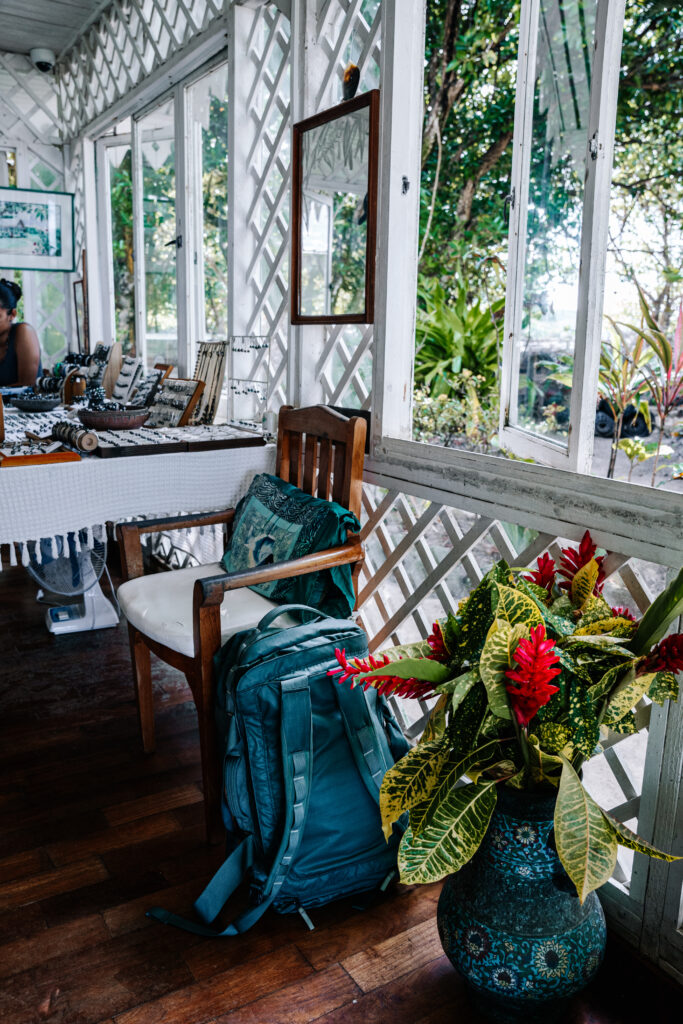
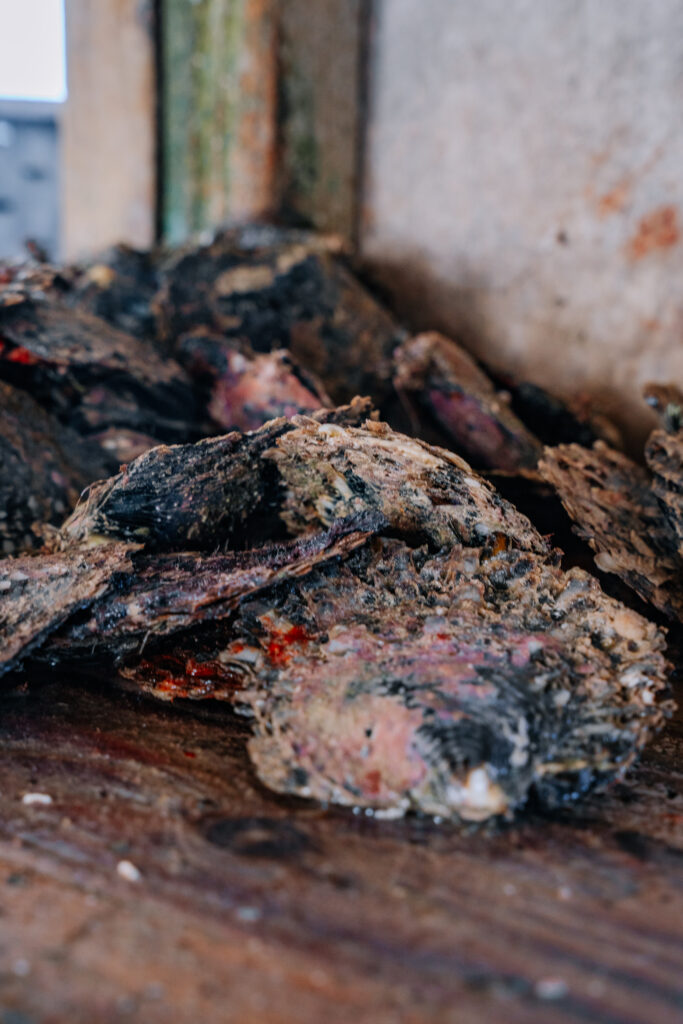
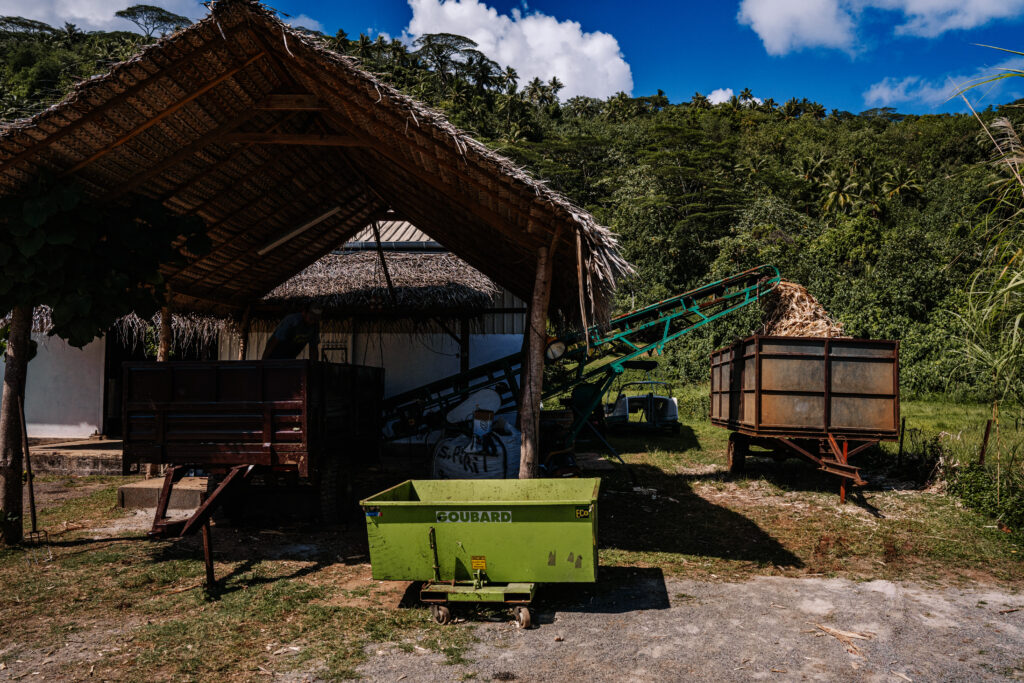
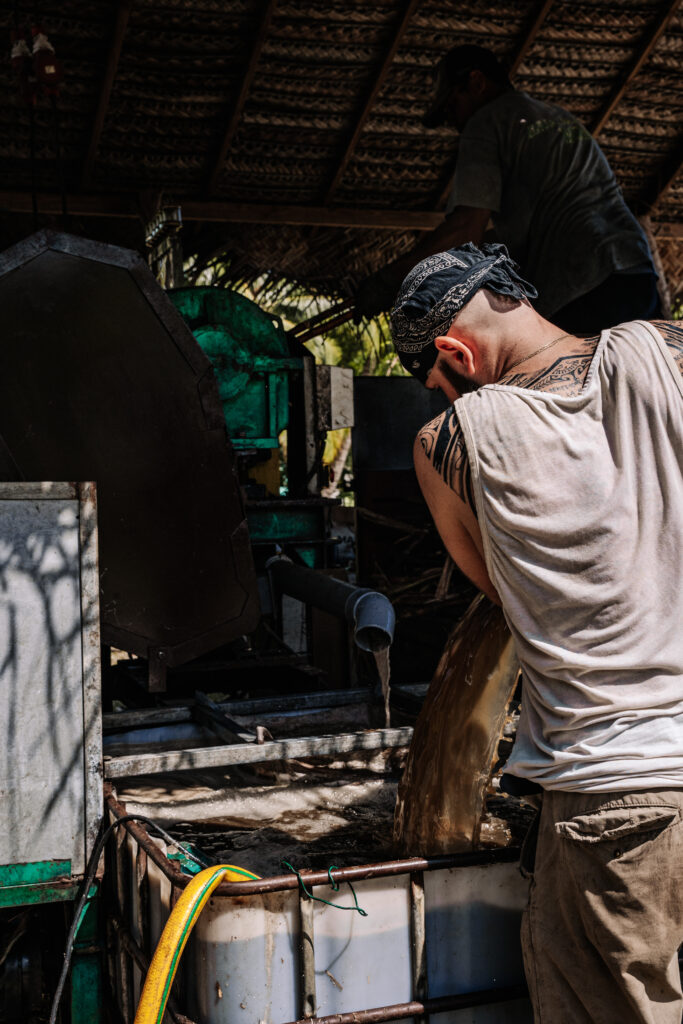
I initially didn’t want to visit Bora Bora, thinking it was a destination reserved for couples gazing into each other’s eyes during their romantic honeymoons. How surprised I was! I understood why this island is so popular already on the plane. The view from the plane window of the island seemed unreal to me.
In the middle of the main island stands a solid mountain, with thick fog surrounding its peak. The lower you look, the less dramatic it seems: the steep summit transitions into gentle green hills, leading down to white sand and a blue lagoon surrounding the beach. Several shades of water blend together, creating magical patterns on the surface, which, seen from above, form a collage of every shade of navy, blue, and azure. In the bright sun, tiny motu sparkle around the lagoon, and one of them holds the airport where I landed, wide-eyed in amazement. I must have looked comical, but without my phone to take a picture, I just watched, unable to believe the view below, as it was the first time in my life I saw something that looked so much like it was AI-generated.
To complete a luxurious experience, consider staying in one of the bungalows at hotels like Conrad, Intercontinental, or St. Regis. These resorts offer the ultimate in comfort, with stunning views and exclusive services, perfect for those seeking a truly high-end escape.
If you're looking for something more affordable and local, I recommend the small guesthouse Sunset Hill Lodge. The cottages are right by the water, with shops and a beach nearby. You can also rent bicycles across the street. The cottages are fully equipped, comfortable, and feature a terrace with an ocean view.
You must visit the most beautiful public beach I saw in all of Polynesia. Although most beaches in Bora Bora belong to hotels, Matira Beach is just as stunning. It offers a wide beach with a blue lagoon and views of nearby motu, perfect for relaxation and snorkeling. There are restrooms, shaded picnic spots, and plenty of bars, shops, and restaurants nearby.
Bora Bora is a fantastic destination for snorkeling. For beginners, the Anau Point in the lagoon on the island's east side is perfect. Here, you can explore the coral reef and encounter massive mantas, also known as sea devils. You'll also see several shark species, dolphins, and turtles in these waters.
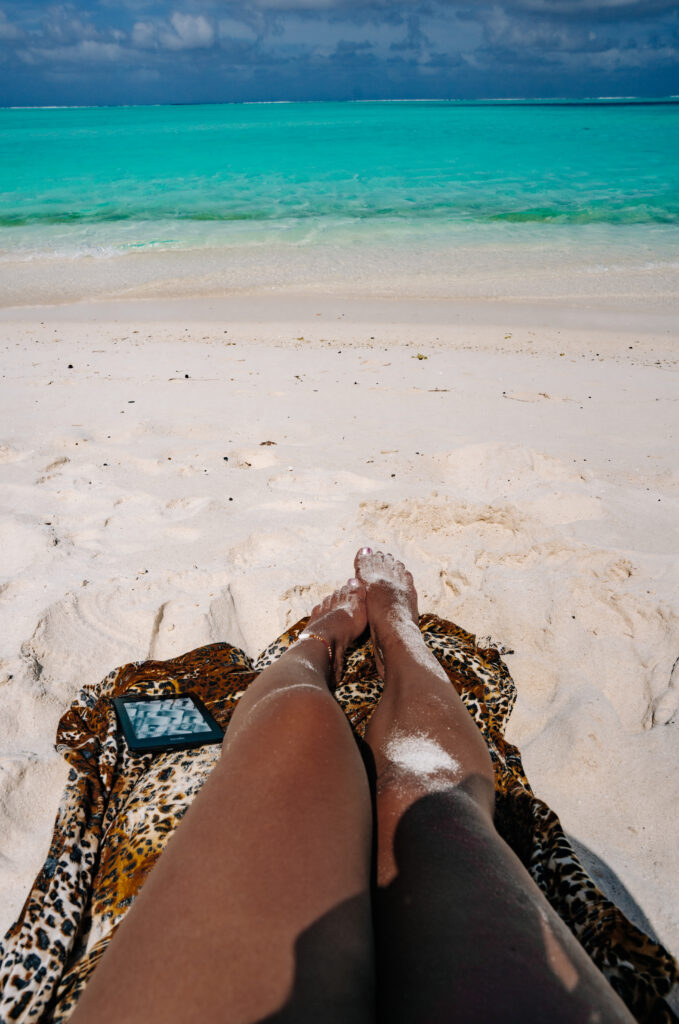
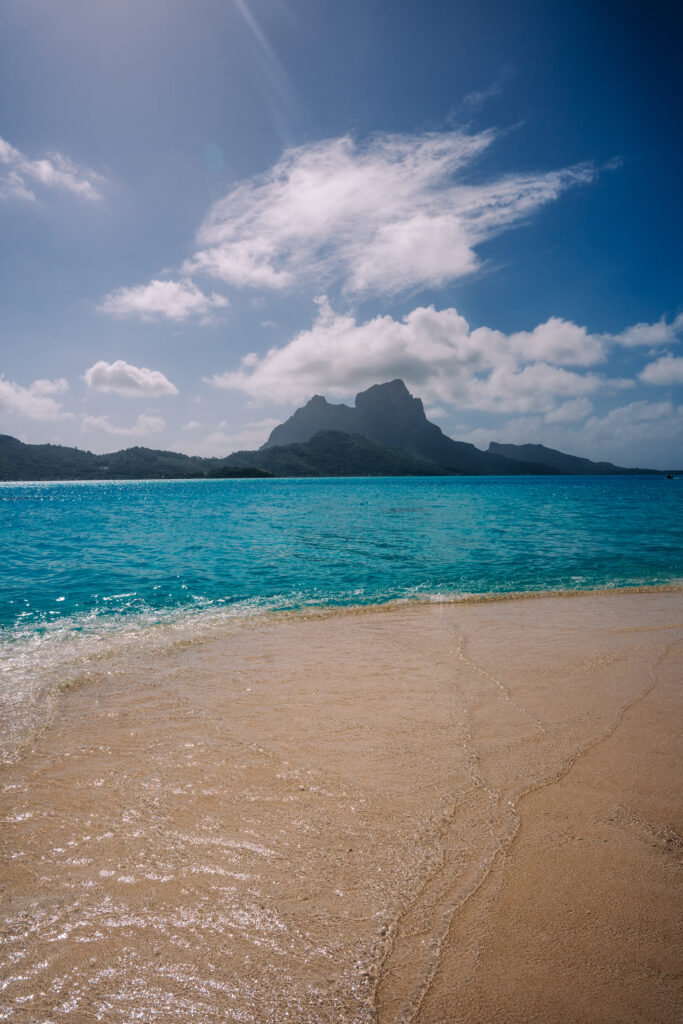
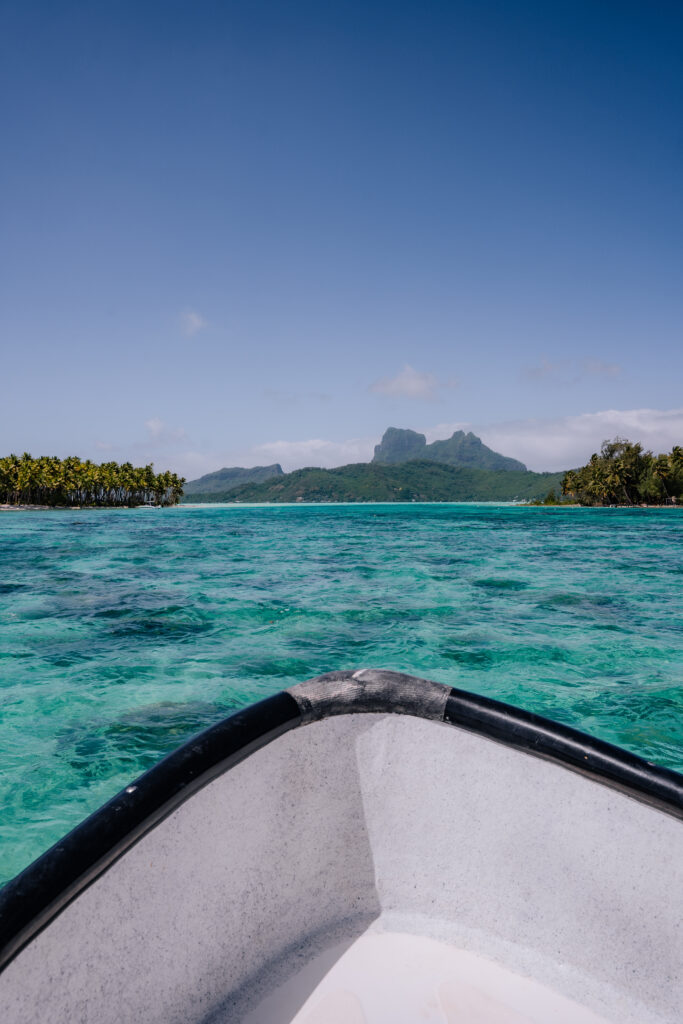
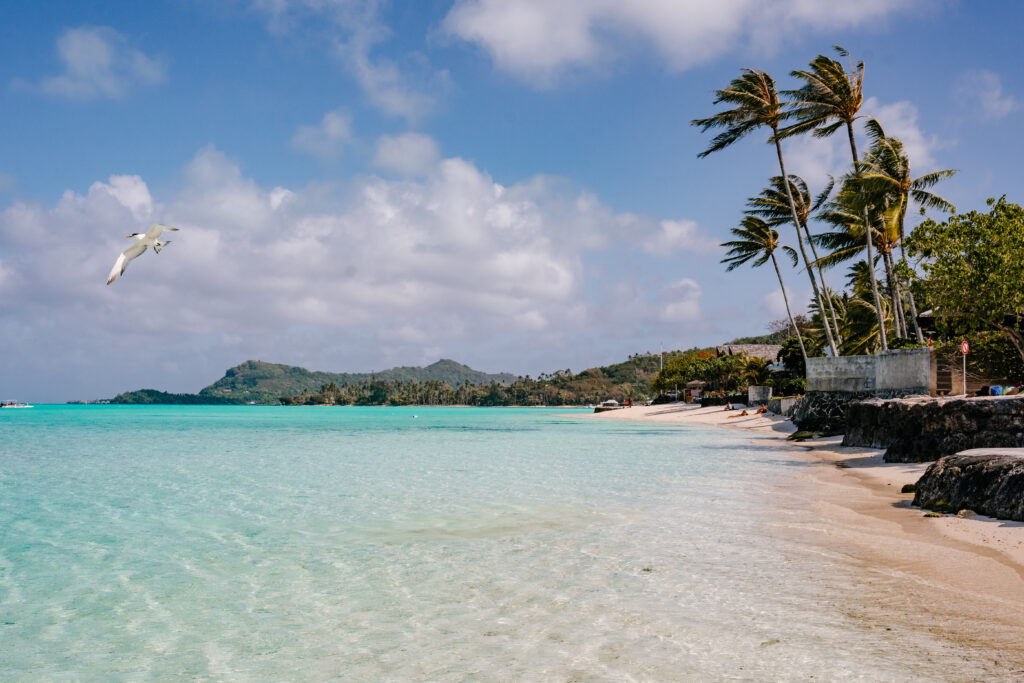
French Polynesia is famous for its delicious fish and seafood. Fish dominate the plates at homes and in restaurant menus. You can enjoy grilled fish, sashimi, hot or cold fish, carpaccio, fried fish, fish in coconut milk, fish in banana leaves, and fish burgers. Apart from raw fish in coconut milk, you’ll taste the best tuna tartare, mahi-mahi in coconut milk, swordfish, and mackerel. Don’t miss the vanilla sauce served with grilled fish. It’s also a paradise for seafood lovers, with shrimp and octopus tasting like nowhere else. In addition to fresh fruits like mangoes, pineapples, or papayas, Polynesia is also famous for taro (sweet potatoes) and uru (breadfruit). Visit popular roulottes or snacks – small roadside bars serving fresh fish and dishes at great prices.
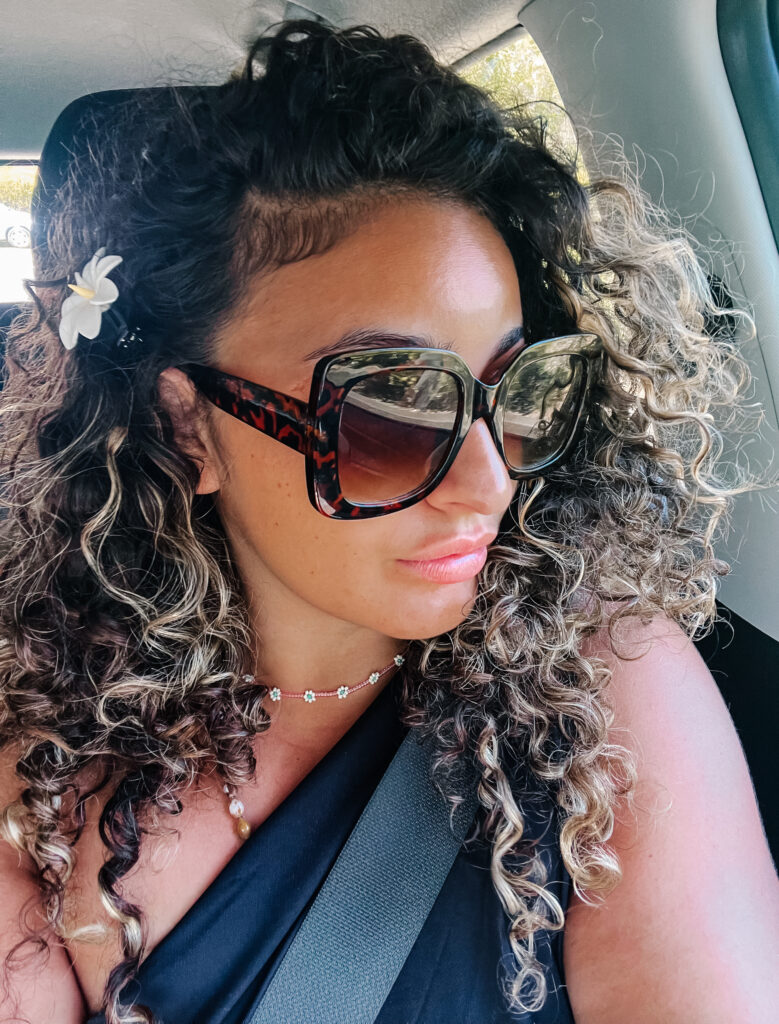
The most common way to travel between the islands in French Polynesia is by plane. There are two main airlines to choose from: Air Tahiti and Air Moana. Air Moana is usually a bit cheaper, with flights during peak season costing around 70-120 euros each.
Example flight prices between islands:
Papeete -> Raiatea 127€
Raiatea -> Bora Bora 80€
Moorea -> Raiatea 125€
Raiatea -> Huahine 50€
Papeete -> Rangiroa 159€
An alternative is the Apetahi Express ferry, which operates between the islands of Bora Bora, Huahine, Maupiti, Raiatea, Taha'a, and Tahiti. However, keep in mind that due to bad weather and strong winds, ferries may not operate for up to two weeks (and sometimes due to technical issues).
On the islands, you can get around by:
Public transportation is only available on Tahiti. I saw one public bus on Moorea, but it seemed more like a ghost bus, with little information available. On smaller islands, there is no public transportation, and your options are boats, car rentals, or taxis.
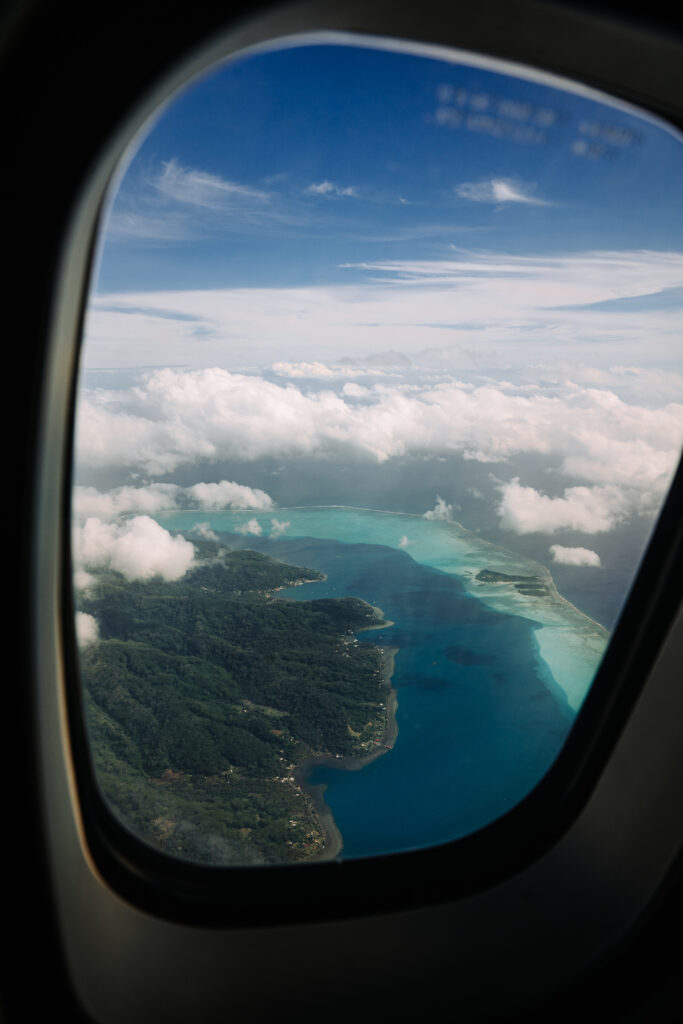
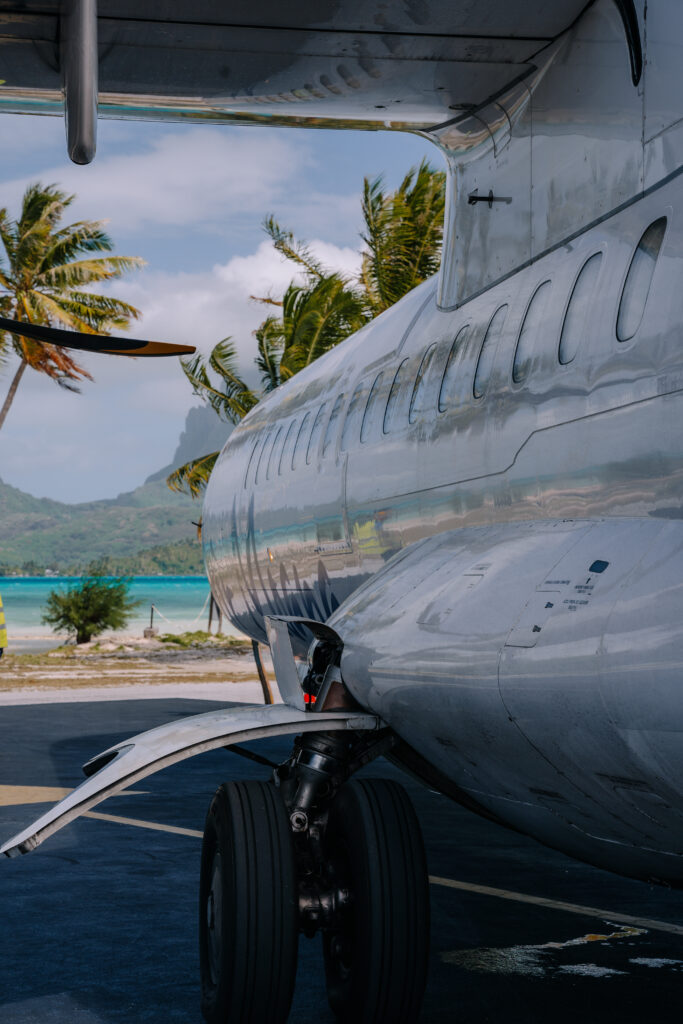
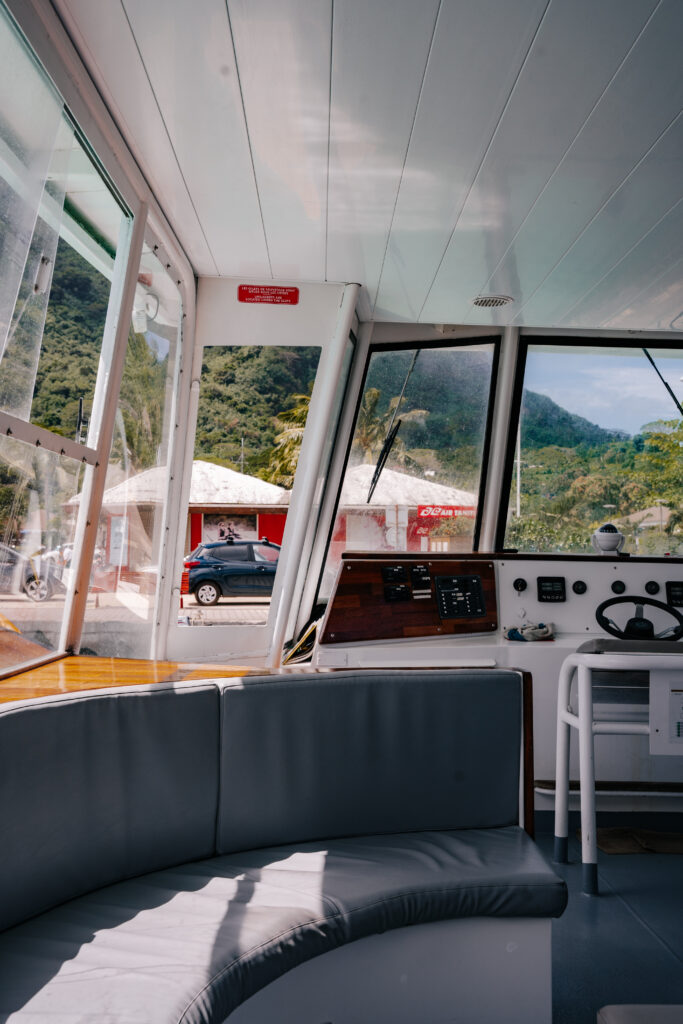
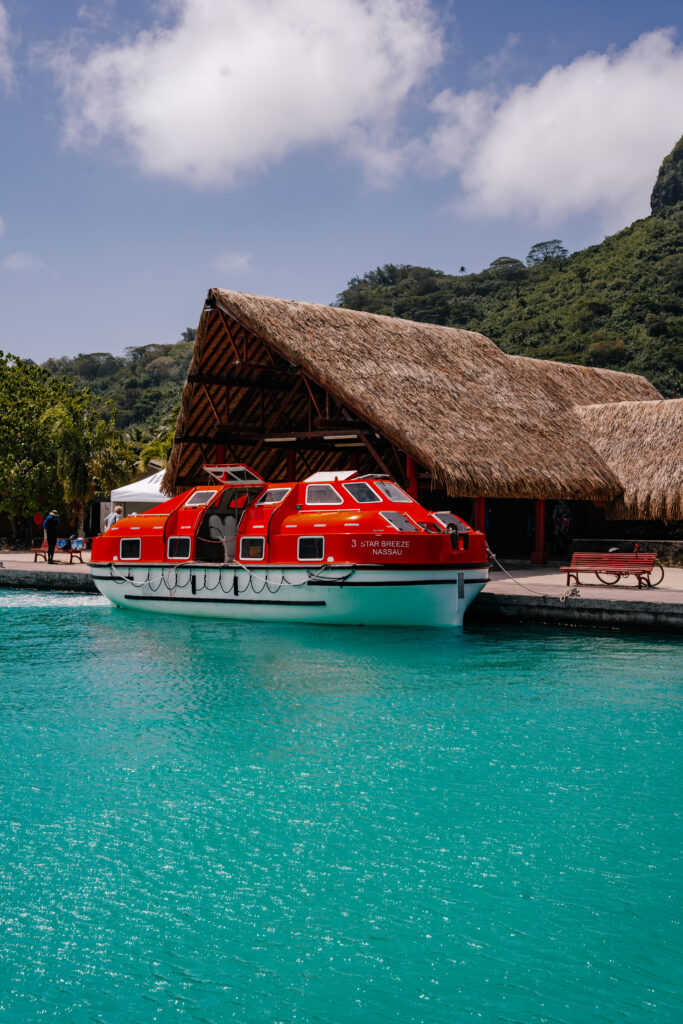
Definitely! If you love water, paradise beaches, and sporty, active experiences, along with nature and wildlife, or if you're a fan of snorkeling and the island lifestyle, make sure to add this place to your travel wish list. It's a perfect destination for those who enjoy both relaxation and adventure.
Nowhere have I seen such a beautiful coral reef, eaten such delicious raw fish, or swum freely among sharks and rays.
Polynesia also offers breathtaking views. The mountains and trekking routes will leave you in awe, with scenic vistas of beaches and coves surrounded by a blue lagoon, and hidden waterfalls with cascading crystal-clear water. The trails are safe and well-marked.
It’s one of the few places in the world where you can observe whales in their natural environment.
Add the unique hotels, overwater bungalows, and small family-run guesthouses, along with numerous water sports and beach activities.
There are no dangerous animals here, but you can swim with rays, dolphins, turtles, sharks, and mantas.
This is definitely one of the most unique places I’ve been, and I highly recommend adding Polynesia to your travel wish list.
Check my Instagram for more travel inspirations